Last Updated on November 4, 2024 by Owen McGab Enaohwo

According to studies, one-third of leaders are born, and two-thirds are made. Leadership skills can be acquired through self-development, training, and experience. However, doing it all by yourself is challenging. You can leverage available resources to build and achieve your leadership goals faster.
Learning from acclaimed leaders will help aspiring leaders avoid the mistakes they made and reinforce their success strategies. We have compiled the 17 best books on leadership and management in 2024, outlining their key lessons and how to implement them for guaranteed success.
Effective leaders and managers take the initiative to streamline business operations with workflow management software like SweetProcess so that employees can thrive in their jobs. Sign up for a 14-day free trial without a credit card.
Table of Contents
17 Best Books on Leadership and Management in 2024
Document Your Company’s Procedures, Processes, and Policies Using SweetProcess
Level Up Your Leadership & Management Skills
Old Classics That Stay True

Despite being published decades ago, the following books are still popular and resonate with many due to their invaluable lessons. They shed light on core leadership qualities that have been proven and tested.
1. How to Win Friends and Influence People

Source: Penguin.co.uk
How to Win Friends and Influence People by public speaker and psychology lecturer Dale Carnegie focuses on building solid relationships for human coexistence. Leaders who are in good standing with team members can influence and motivate them to achieve collective goals. Carnegie shares strategies for nurturing meaningful relationships.
Key Takeaways and Lessons
- It is more profitable to focus on people’s strengths than their weaknesses.
- Using power over subordinates executes the job, but motivating them does it better.
- Listening to people helps win their trust.
- Respecting and acknowledging others is essential in the workplace.
- Learning is a continuous process from which leaders can benefit.
How to Implement Them as a Leader and Manager
- Show a genuine interest in your teammates beyond the work they do.
- Appreciate employees’ efforts no matter how little because it will encourage them to work harder.
- Welcome team members’ views and opinions on projects.
- Address workers by name even when new because it makes them feel seen.
- Do not blame employees for your mistakes.
2. The 7 Habits of Highly Effective People: Powerful Lessons in Personal Change
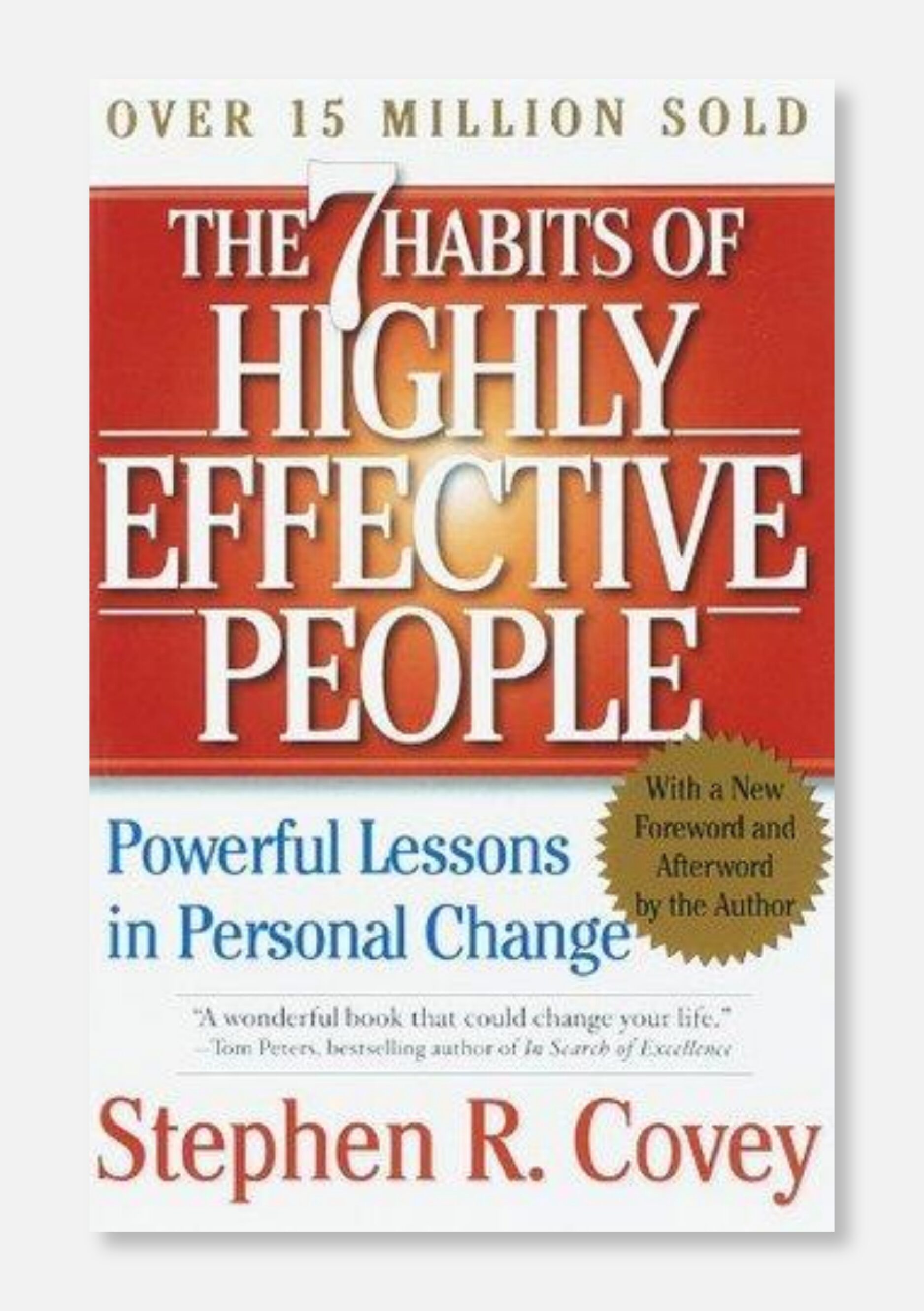
Source: Goodreads.com
The 7 Habits of Highly Effective People: Powerful Lessons in Personal Change by management professor Stephen R. Covey is about cultivating habits for success. It offers strategies for solving problems in formal and informal environments. In this bestseller, Covey discusses ways to develop oneself and contribute toward the collective growth of a group or organization.
Key Takeaways and Lessons
- It is more productive to focus on events within one’s control.
- Prioritizing things that are most important to you helps to save time, energy, and resources.
- Understanding people’s needs is an effective way to win their trust.
- Success is more attainable with small, defined steps.
- Teamwork is more impactful than individual effort.
How to Implement Them as a Leader and Manager
- Cultivate team spirit in your workplace.
- Encourage open communication so a team member can contribute ideas.
- Focus on achieving your goals as a team, avoiding distractions along the way.
- Delegate tasks to team members based on their strengths and expertise for high performance.
- Get team buy-in by explaining your vision, objective, and goals to them.
3. Leadership and the One Minute Manager: Increasing Effectiveness Through Situational Leadership
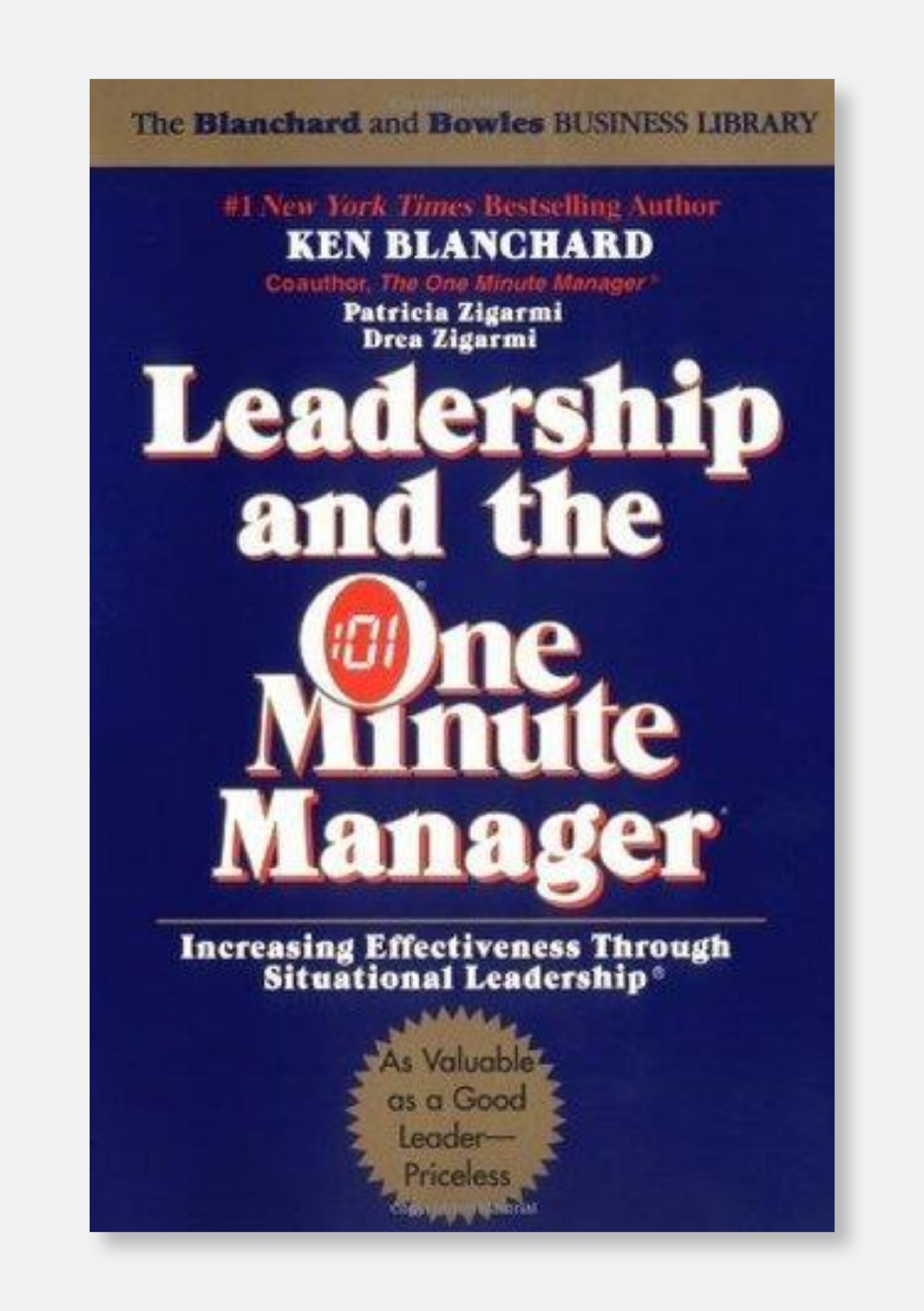
Source: Goodreads.com
Leadership and the One Minute Manager: Increasing Effectiveness Through Situational Leadership by entrepreneurs and management consultants Ken Blanchard, Patricia Zigarmi, and Drea Zigarmi is about adopting suitable employee management styles based on their personalities. The authors touch on the different hats of a successful leader and how to identify the most suitable one to wear at a time.
Key Takeaways and Lessons
- People have different capacities in the workplace.
- Team members learn faster with tailored teaching and coaching.
- Accountability increases a sense of responsibility.
- Meeting employees at their points of need makes them more efficient.
- Employees’ confidence level impacts their performance.
How to Implement Them as a Leader and Manager
- Assign tasks to employees based on their skills.
- Listen to team members’ challenges in their jobs and offer guidance.
- Permit competent employees to make certain decisions.
- Encourage your team to ask questions and share ideas about projects.
- Measure employee growth and switch management style accordingly.
4. High Output Management
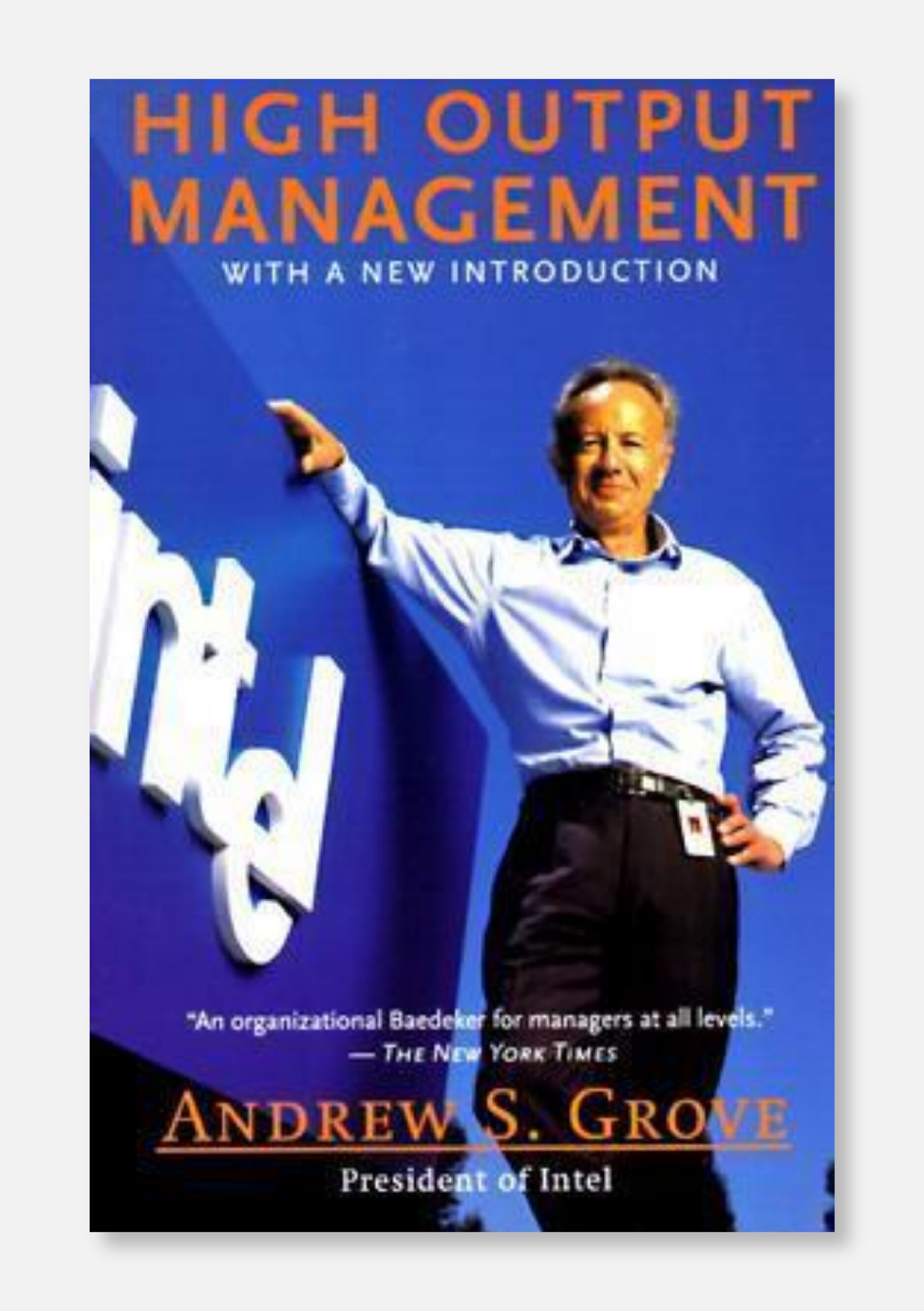
Source: Goodreads.com
High Output Management by engineer and CEO Andrew S. Grove explains that effective management precedes business success. To be successful, leaders must inspire and motivate teammates to go the extra mile in their duties. Grove advises that reinforcing positive habits brings about organizational effectiveness.
Key Takeaways and Lessons
- Processes must be standardized for repetitive high performance.
- Quantifying outputs helps visualize performance progress.
- Effective leadership is a product of good time management.
- Meetings are opportunities for building efficiency in the workplace.
- The best decisions require more than a single person’s input.
How to Implement Them as a Leader and Manager
- Streamline your operations with standard operating procedures.
- Establish metrics for measuring employee performance and output.
- Outline how you use your time and what you use it for.
- Create a productive meeting agenda beforehand and stick to it.
- Bounce ideas off your team in the decision-making process.
Good for Managers
Managers have a responsibility to lead others and motivate them to perform designated tasks. The following books discuss establishing one’s authority as a better leader and motivating others to commit to actualizing set goals.
5. Dare to Lead

Source: Penguin.co.uk
Dare to Lead by management professor Brené Brown questions the traditional leadership style of exerting authority over subordinates. It emphasizes leadership as a service to guide and help others harness their full potential. In her experience, Brown found that true success is a collective effort. Everyone should get a fair chance to contribute meaningfully.
Key Takeaways and Lessons
- Sustainable success is a team effort.
- Vulnerability is a strength, not a weakness.
- Hoarding power builds hostility.
- Curiosity expands knowledge and solves problems.
- A win for a teammate is a win for the team.
How to Implement Them as a Leader and Manager
- Be open to learning from team members because they may know things you do not know.
- Show empathy by treating employees how you would want to be treated.
- Acknowledge when you do not have the answers instead of going ahead with an idea to prove a point.
- Take a break from work when it gets overwhelming and allow teammates to do the same.
- Approach problems from a human angle by identifying how they impact people.
6. The Leadership Challenge: How to Make Extraordinary Things Happen in Organizations
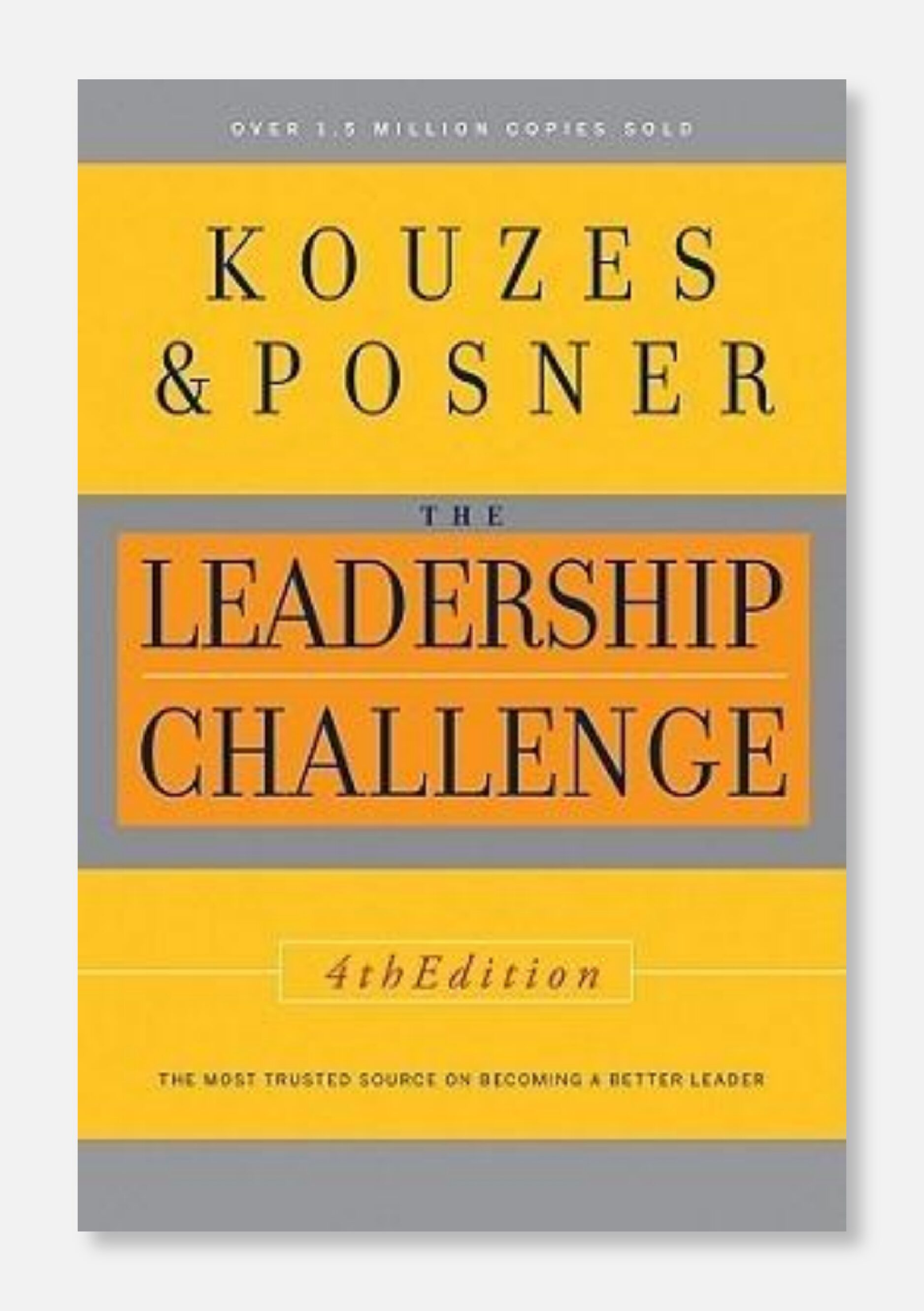
Source: Goodreads.com
The Leadership Challenge: How to Make Extraordinary Things Happen in Organizations by entrepreneur James M. Kouzes and leadership professor Barry Z. Posner highlights the significance of collective effort. The most efficient leaders can only do so much to solve organizational problems. Kouzes and Posner beckon leaders to overcome the challenge of getting their team members’ genuine support in achieving set goals.
Key Takeaways and Lessons
- Collaborative input yields better results than individual input.
- Delegation increases efficiency and productivity.
- Empowering teammates to make decisions within their jurisdictions makes them more involved.
- Taking small, calculated risks prepares you to take bigger ones.
- Acknowledging losses and celebrating wins as a team enhances bonding.
How to Implement Them as a Leader and Manager
- Lead by example—show others what you want them to do.
- Inspire team members by highlighting accomplished work and visualizing possibilities.
- Emphasize shared interests and how achievements will benefit the entire team.
- Identify employees’ skills and assign them to areas of expertise.
- Celebrate individual efforts and wins.
7. Gung Ho! Turn On the People in Any Organization

Source: Goodreads.com
Gung Ho! Turn On the People in Any Organization by management consultant Kenneth H. Blanchard and entrepreneur Sheldon Bowles present fresh ideas for boosting employee performance and productivity in the workplace. Blanchard and Bowles acknowledge the need for organizational leadership development to cultivate positive team social behaviors.
Key Takeaways and Lessons
- Productivity increases when people work with the right tools.
- Establishing your core values guides you toward achieving your goals.
- Motivating and cheering workers inspire them to do more.
- Employees are more productive when they have some level of freedom.
- A conducive work environment is vital to enhancing employee performance.
How to Implement Them as a Leader and Manager
- Avoid micromanaging your employees.
- Communicate performance expectations to team members.
- Delegate tasks according to strengths and expertise.
- Set measurable targets for your team.
- Acknowledge teammates’ contributions and celebrate their wins.
8. The Eight Paradoxes of Great Leadership: Embracing the Conflicting Demands of Today’s Workplace
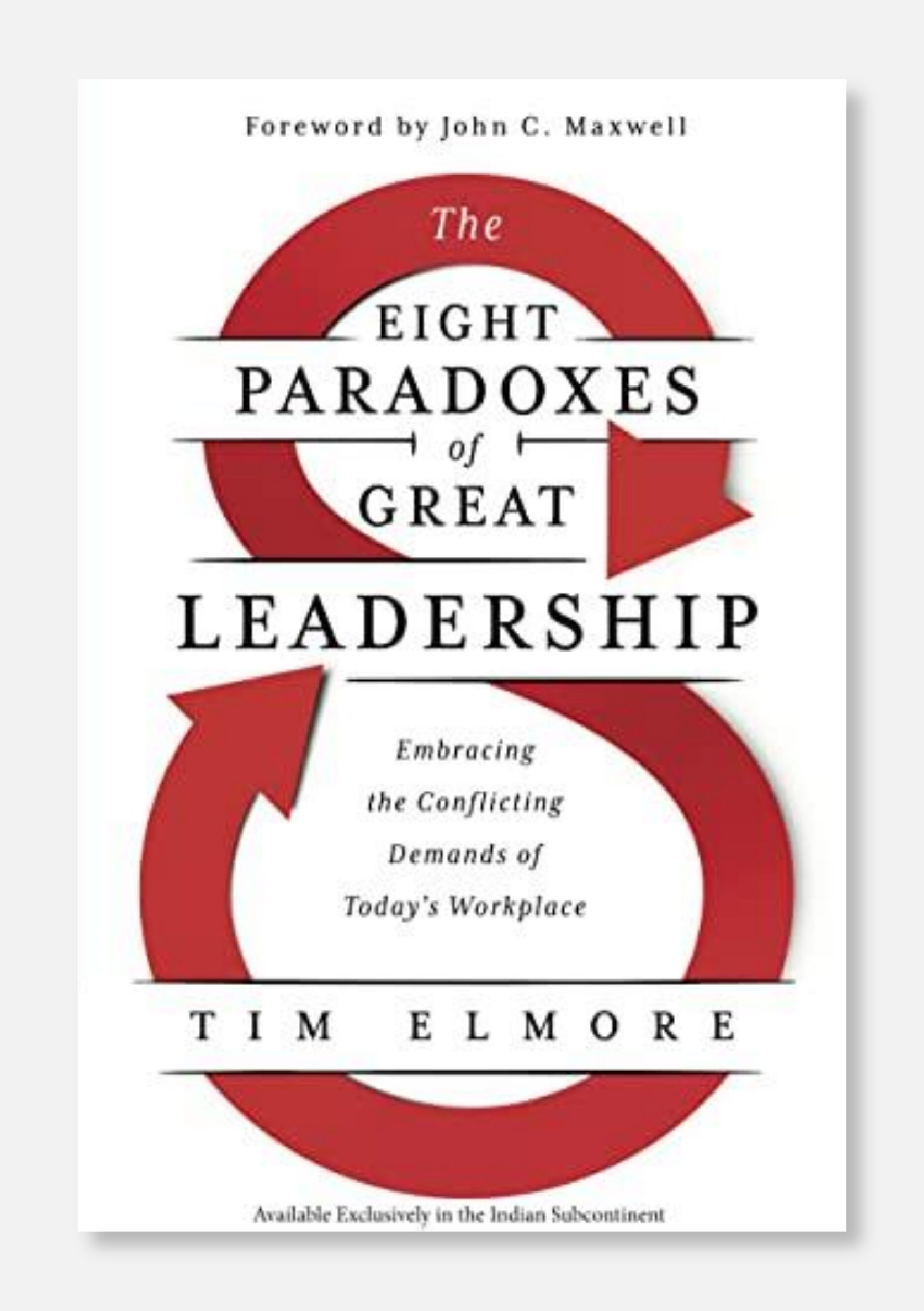
Source: Abebooks.com
The Eight Paradoxes of Great Leadership: Embracing the Conflicting Demands of Today’s Workplace by leadership consultant and motivational speaker Tim Elmore offers insights on how leaders can navigate the ever-changing environments of today’s business. Elmore touches on ways to work with young people with new perspectives.
Key Takeaways and Lessons
- Change is constant; you must adapt to succeed.
- Open-mindedness is a prerequisite for achieving success in the digital age.
- A mix of humility and confidence is needed to thrive at work.
- Be open to learning because no one knows it all.
- High standards and gracious forgiveness can work hand in hand.
How to Implement Them as a Leader and Manager
- Embrace new methods and processes of performing tasks.
- Be keen on adopting digital technology in your business.
- Interact with younger employees to get a fresh take on ideas.
- Acknowledge when you may not have the answers to issues.
- Be lenient while maintaining high standards at work.
Good for Beginners
Starting in a leadership or managerial role could be uncomfortable. Many newbies need help with winning their team members’ affection and discharging their duties as superiors. These books suggest easy ways to build a rapport with teammates while maintaining your leadership authority.
9. Leaders Eat Last: Why Some Teams Pull Together and Others Don’t

Source: Goodreads.com
Leaders Eat Last: Why Some Teams Pull Together and Others Don’t by CEO and leadership consultant Simon Sinek views leadership as looking after the people under your supervision and putting their interests above yours. It takes a sacrificial approach to leadership on the premise that if you have the interests of others at heart, they will go out of their way to protect your interests.
Key Takeaways and Lessons
- Respect is earned, not demanded.
- Psychological safety is just as important as physical safety.
- Protecting the interests of others protects self-interests in the long run.
- Effective communication fosters understanding and coexistence.
- A little encouragement can push people to be more productive.
How to Implement Them as a Leader and Manager
- Build a people-centric culture in your organization.
- Create a safe and conducive work environment for team members to feel comfortable.
- Provide employees with the tools and resources they need in their jobs.
- Observe workers’ performance levels to identify lapses and engage them to understand reasons for low output.
- Promote a healthy relationship among employees and resolve rising disputes fairly.
10. Multipliers: How the Best Leaders Make Everyone Smarter
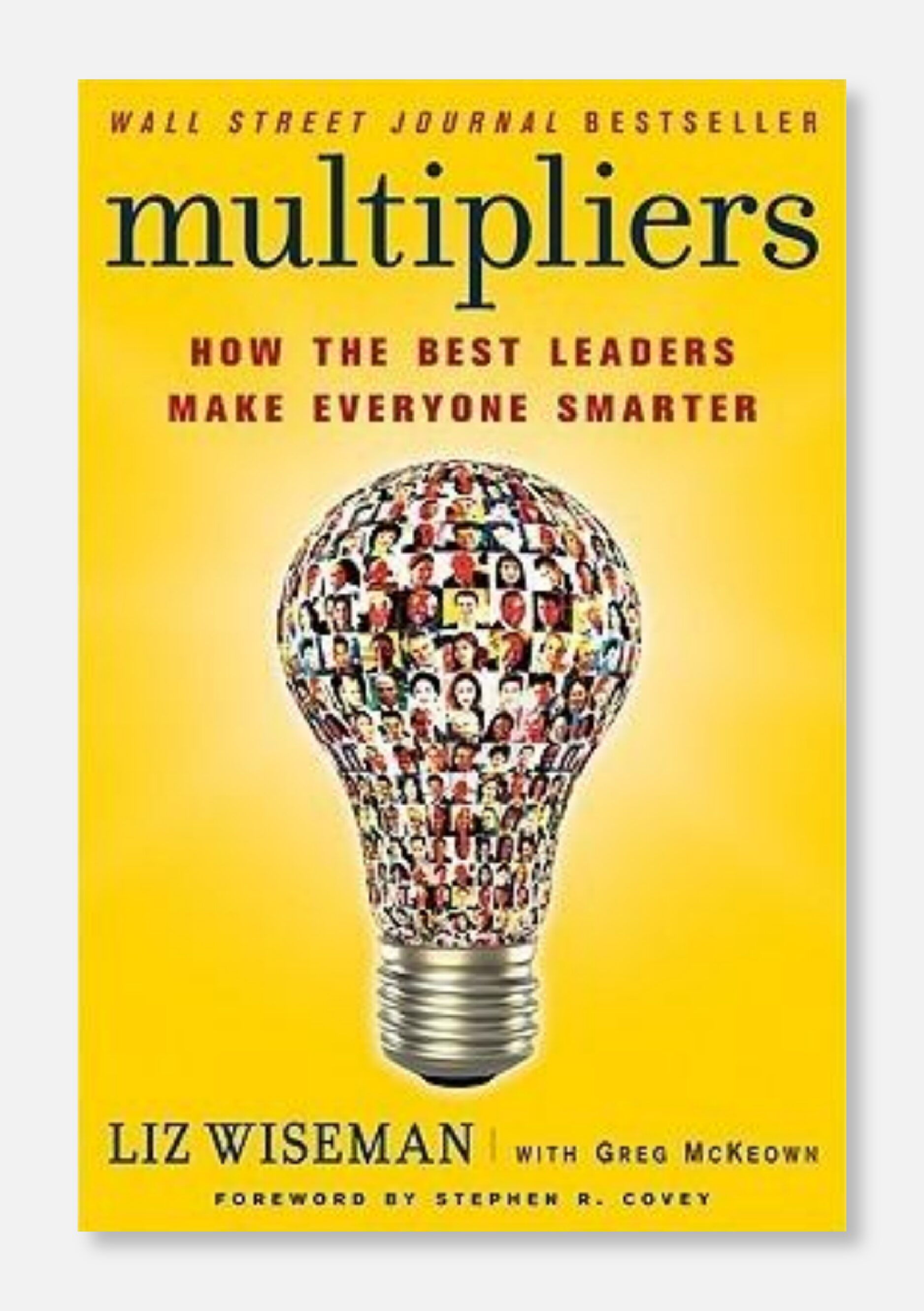
Source: Goodreads.com
Multipliers: How the Best Leaders Make Everyone Smarter by CEO and leadership researcher Liz Wiseman explains the differences between leaders, highlighting why some leaders enrich their team members and others drain them. Wiseman advises that cultivating a healthy work culture increases employee productivity and builds job satisfaction.
Key Takeaways and Lessons
- Micromanaging employees is counterproductive.
- Asking questions produces valuable insights.
- Employees are not less intelligent; they only play different roles.
- Making mistakes helps one to learn and grow.
- It is important to celebrate teammates when they earn it.
How to Implement Them as a Leader and Manager
- Assign tasks to employees based on their skills and trust their ability to deliver.
- Encourage team members to believe in themselves while performing their jobs.
- Acknowledge good performance with rewards or incentives.
- Do not be quick to shut down contributions without examining them.
- Build a collaborative work culture where everyone is free to participate.
11. The Ideal Team Player: How to Recognize and Cultivate the Three Essential Virtues

Source: Goodreads.com
The Ideal Team Player: How to Recognize and Cultivate the Three Essential Virtues by management executive and entrepreneur Patrick Lencioni encourages leaders to be the team members they would like to work with by cultivating the habits of an ideal team player. According to Lencioni, it is easier for such a leader to recognize the ideal team player in the hiring process.
Key Takeaways and Lessons
- Humility is key to collective success.
- Ambition pushes one to achieve more than the barest minimum.
- Emotional intelligence helps people get along better.
- Empathy is needed for understanding others and meeting them at their level.
- A good team player prioritizes team success over individual success.
How to Implement Them as a Leader and Manager
- Do not belittle or underestimate teammates.
- Be upfront with team members about your work virtues.
- Seek clarity on issues by asking questions.
- Offer assistance to employees in areas they need help.
- Focus more on what workers are doing right than what they are doing wrong.
12. Good to Great: Why Some Companies Make the Leap…and Others Don’t
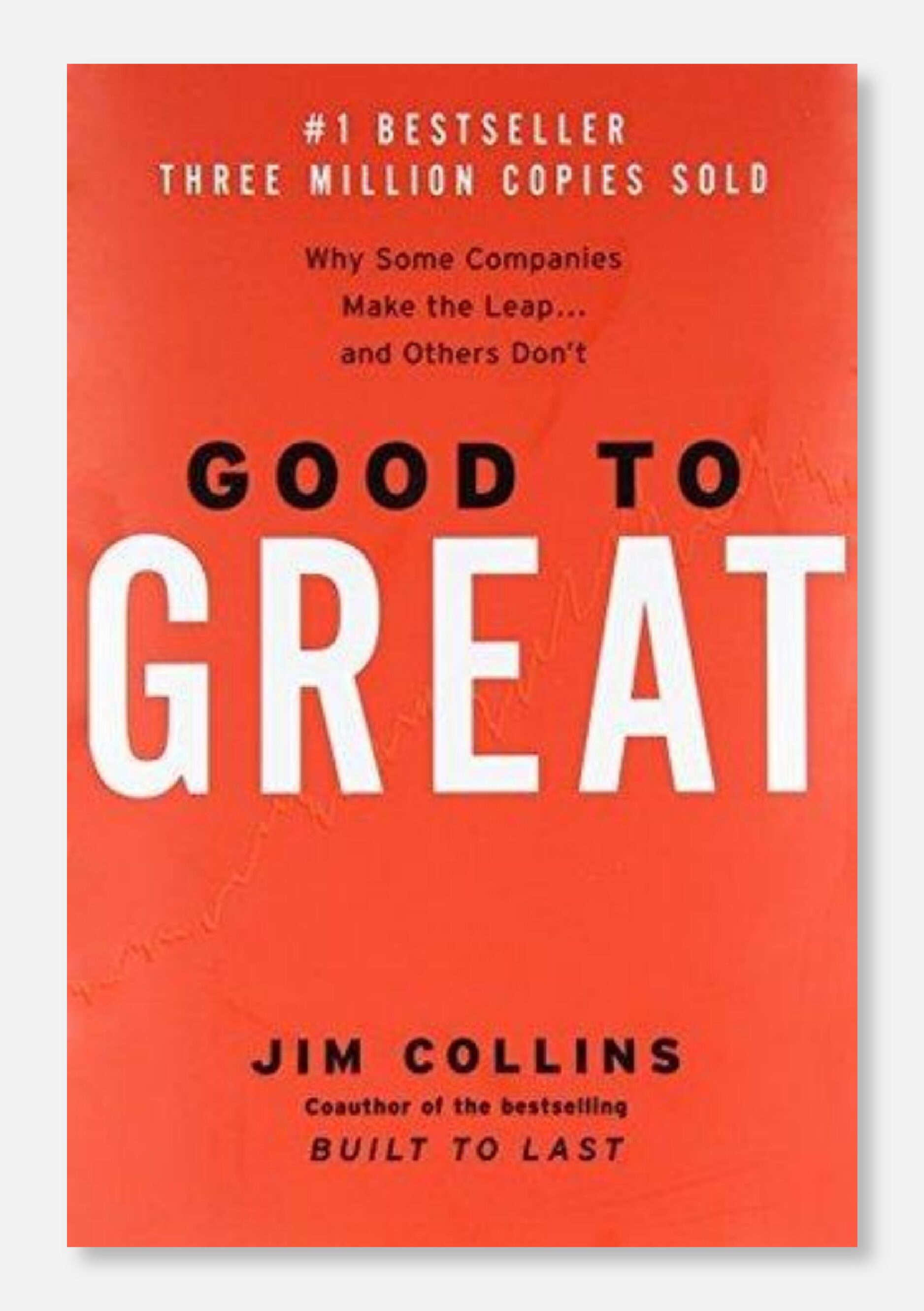
Source: Goodreads.com
Good to Great: Why Some Companies Make the Leap…and Others Don’t by business consultant and researcher Jim Collins explains why some organizations achieve tremendous success and others fail to do so despite making efforts. Collins states that success is not by chance but by a combination of various deliberate actions.
Key Takeaways and Lessons
- A great leader is humble.
- Employees are the driving force of a business.
- A realistic approach offers a better chance at success.
- Little but steady steps bring great results.
- Discipline helps cut excesses and distractions.
How to Implement Them as a Leader and Manager
- Do not undermine your employees.
- Prioritize the interests of the company over your own.
- Set little targets in your daily operations.
- Ensure that your goals are feasible and achievable within established timelines.
- Hold yourself and your team accountable.
13. Start With Why: How Great Leaders Inspire Everyone to Take Action

Source: Goodreads.com
Start With Why: How Great Leaders Inspire Everyone to Take Action by business leadership consultant Simon Sinek explains a common factor among successful people: their ability to articulate why they do what they do. Many people are action-oriented and focus on how to do things. In his experience, Sinek reveals that failure to identify and communicate their “why” makes it difficult for such people to get others on board.
Key Takeaways and Lessons
- Profit generation is not a “why” in business but a result.
- Purpose precedes a great vision.
- Manipulating people can only take you so far; keeping them requires inspiration.
- Winning people’s trust gets the best out of them.
- Staying true to your “why” creates lasting success.
How to Implement Them as a Leader and Manager
- Articulate and communicate your “why” to team members early enough.
- Prioritize working with early adopters and innovators at the beginning of a project.
- Build an emotional connection with your teammates by sharing your motivations with them.
- Lead by example to win the trust and respect of your employees.
- Support employees in thriving in the workplace, which results in organizational success.
Unlikely Choices With Hard Lessons
Leadership can be challenging, requiring difficult decisions in unfavorable conditions. The following books guide evaluating tough circumstances, making difficult choices, and facing the consequences.
14. Never Split the Difference: Negotiating as if Your Life Depended on It

Source: Goodreads.com
Never Split the Difference: Negotiating as if Your Life Depended on It, by former FBI negotiator Chris Voss, is a hands-on guide for getting favorable outcomes from the most difficult negotiations. Voss shares practical guidance about how he saved lives and resources by successfully negotiating with terrorists, criminals, and others.
Key Takeaways and Lessons
- Identifying people’s motivations enables you to understand them better.
- Listen carefully to understand what others are saying.
- People always want something—finding out what that is gives you a good head start.
- Informing others that you understand what is at stake for them helps them lower their guard.
- Everyone has something they care about; you just need to figure it out.
How to Implement Them as a Leader and Manager
- Do not be fixated on doing things your way always—consider team members’ ways too.
- Verbalize your expectations to workers and ask how you can help them meet those expectations.
- Understand the reasons behind team members’ actions instead of criticizing them right away.
- Articulate and repeat concerns expressed by team members to make them feel heard.
- Acknowledge that you and your employees have a common interest in achieving organizational goals.
An effective way to achieve organizational goals is to provide employees with a productivity tool that will make them more efficient in their jobs. Sign up for a 14-day free trial of SweetProcess without a credit card to set the ball rolling.
15. The Hard Thing About Hard Things: Building a Business When There Are No Easy Answers
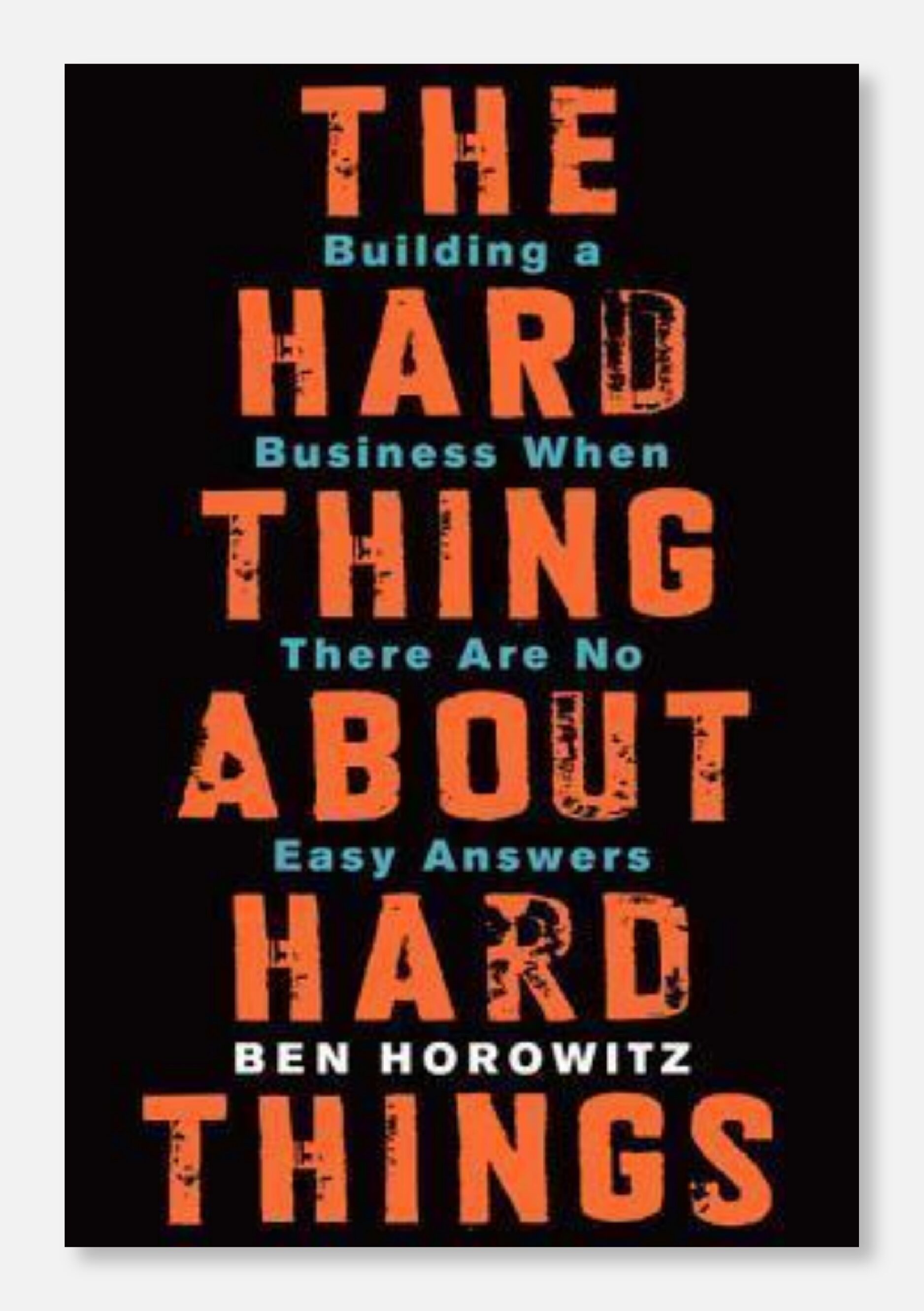
Source: Goodreads.com
The Hard Thing About Hard Things: Building a Business When There Are No Easy Answers by business investor and entrepreneur Ben Horowitz discusses how to navigate challenges as a leader, making tough decisions for the best outcomes. Horowitz shares practical examples of how he handles difficult situations in his business.
Key Takeaways and Lessons
- Hiring mismatch is one of the biggest mistakes to avoid in business.
- The best business decisions are objective, not subjective.
- Crises are better managed with the entire team.
- The best leaders make mistakes; do not be too hard on yourself.
- There is always a way out of every situation; you and your team just need to figure it out.
How to Implement Them as a Leader and Manager
- Understand what every role needs at the time of hiring people who have the required skills.
- Conduct brainstorming sessions with team members to develop strategies and solutions.
- Always have a backup plan in case things do not go as planned.
- Let go of underperforming employees even when it feels difficult.
- Be flexible in changing your business operations according to rising changes in your industry.
16. Extreme Ownership: How U.S. Navy SEALs Lead and Win
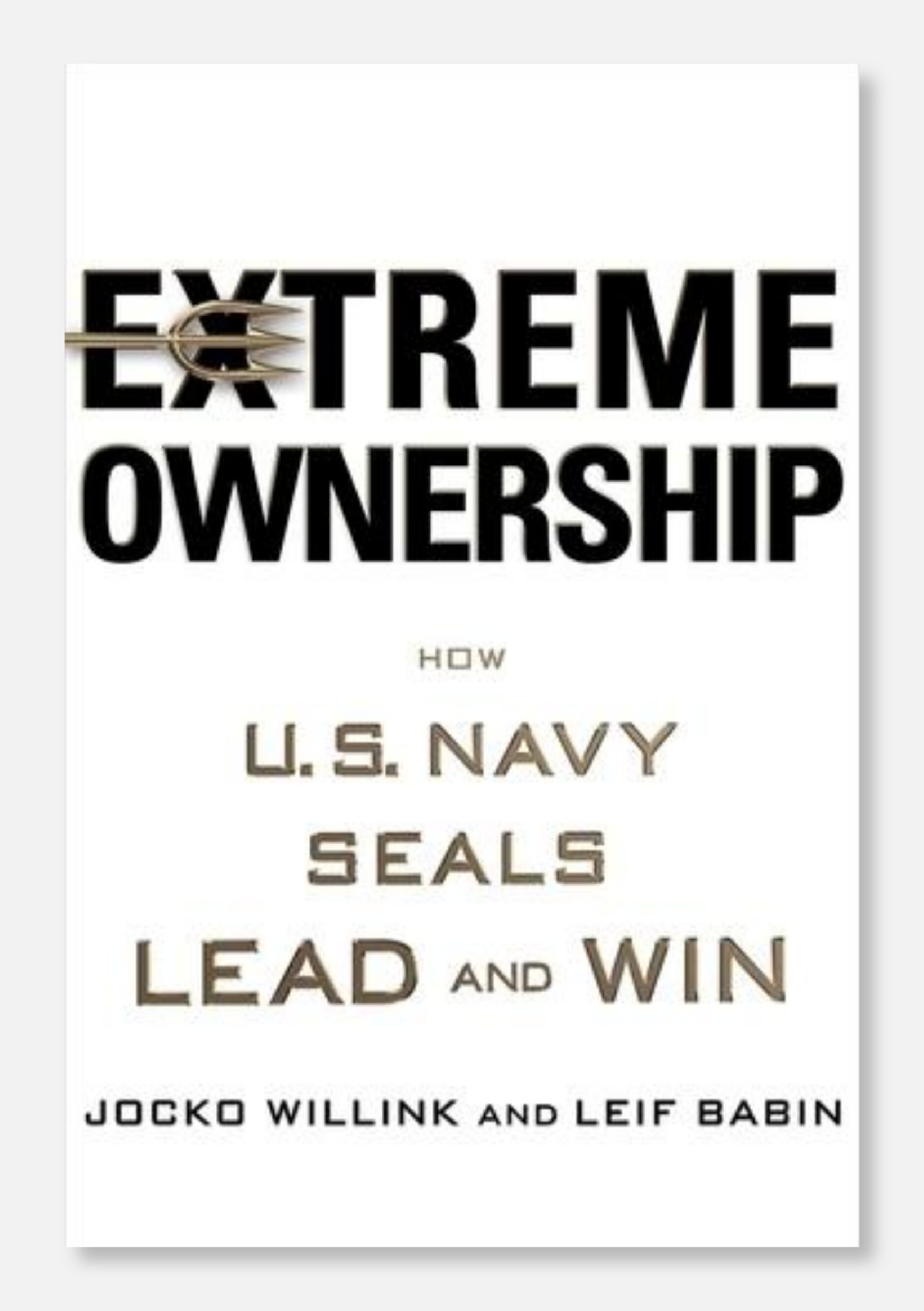
Source: Goodreads.com
Extreme Ownership: How U.S. Navy SEALs Lead and Win, by former Navy SEAL officers Jocko Willink and Leif Babin, explains leadership from a battlefield perspective. The authors share their experiences of mobilizing their teams against the opposition for victory and posit that a leader takes full responsibility for all outcomes.
Key Takeaways and Lessons
- The team’s success or failure is up to the leader.
- A leader must be on top of every situation.
- Leaders are fallible and are prone to making mistakes.
- All problems must be resolved, no matter how little they may seem.
- Accomplishing your goals or mission is the number 1 priority.
How to Implement Them as a Leader and Manager
- Implement an effective decision-making model.
- Communicate with team members and leaders to know what is happening always.
- Be objective in taking action to avoid sentiments that could jeopardize your goal.
- Adopt a proactive disposition to tackle issues before they manifest.
- Take responsibility for your mistakes and wrongdoings.
Working with digital tools limits human mistakes to the barest minimum. Standardize your operations and automate repetitive tasks with SweetProcess. Sign up for a 14-day free trial without a credit card.
17. Change Your World: How Anyone, Anywhere Can Make a Difference

Source: Goodreads.com
Change Your World: How Anyone, Anywhere Can Make a Difference by leadership coach John C. Maxwell and entrepreneur Rob Hoskins discusses the possibility of implementing positive change on all levels, big or small. Maxwell and Hoskins advise that people can bring about the change they desire in their own capacities, regardless of who or where they are.
Key Takeaways and Lessons
- Everyone is capable of bringing about change.
- Change begins with little steps.
- Practicing the change you desire is a good starting point.
- Surrounding yourself with like-minded people fosters change.
- Continuous improvement makes change worthwhile.
How to Implement Them as a Leader and Manager
- Identify what you want to change and why you want to change it.
- Outline little practical steps toward achieving your goals.
- Lead by example by doing things how you want others to do them.
- Hire people who share your vision.
- Evaluate current performances and seek areas for improvement.
Using effective software like SweetProcess gives you full visibility of how employees engage and perform tasks. That way, you can identify lapses and areas for improvement. Sign up for a 14-day free trial—you do not need a credit card.
Stone & Wood, a brewing company, is able to comply with the strict regulations in the manufacturing industry by documenting its policies and procedures in SweetProcess. According to the organization’s quality assurance and sensory coordinator, Thomas Parker, using SweetProcess enables them to document their policies and confirm that team members have read them by signing off.
“Things that we want to ensure people are across, we actually put those communications into SweetProcess. Because it requests their sign-offs, we can see that they’ve seen and read them.”
As a result of this documentation and engagement, the company is able to meet regulatory standards.
“It really helps us a lot with standard requirements that are out there like the International Organization for Standardization (ISO) where you have to demonstrate that your employees have been trained and show procedure documents, so it ticks all the boxes there,” Parker adds.
Document Your Company’s Procedures, Processes, and Policies Using SweetProcess
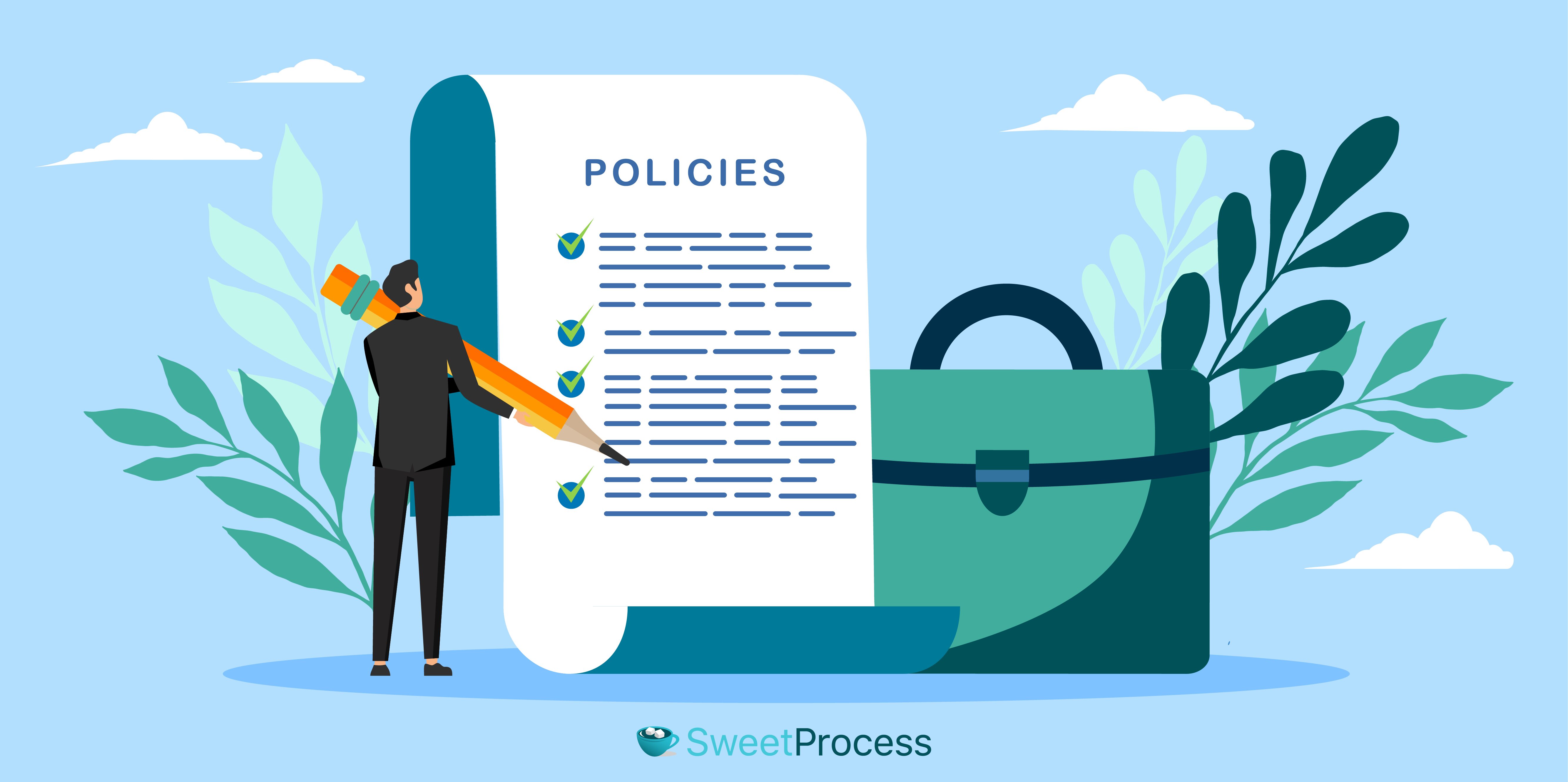
Effective leadership in business entails supporting employees or team members with the right tools and resources to be efficient in their jobs. There is a high chance that your competition is leveraging digital tools to streamline their operations, so you are placing yourself in a disadvantaged position not doing the same. SweetProcess is a workflow management tool for standardizing business operations, enabling you to document work instructions, automate repetitive tasks, and engage with teammates across projects. It is instrumental in employee onboarding/training, managing tasks, improving operations, etc.
How to Document Your Company’s Procedures Manually Using SweetProcess
Click on “Procedures” and “Create Procedure.”
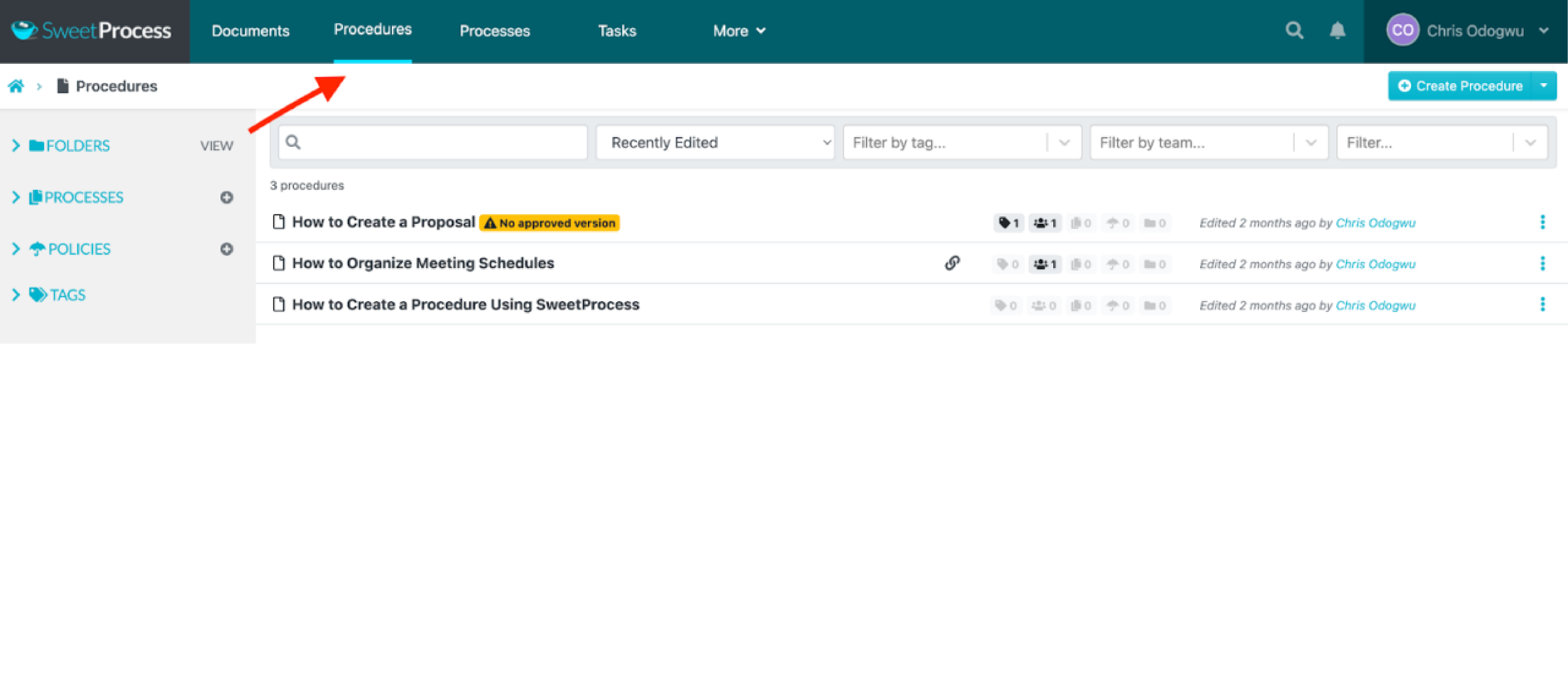
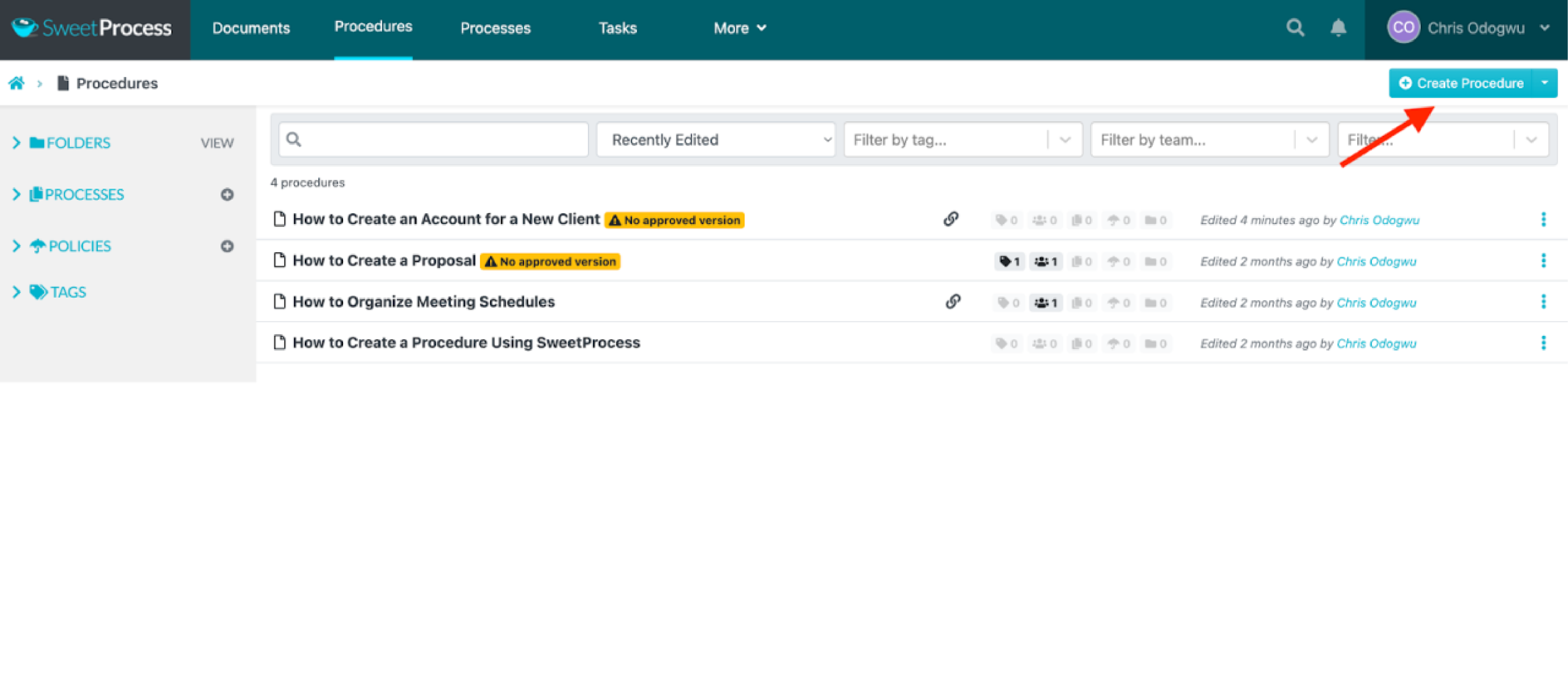
Enter the procedure title and click on “Continue.”
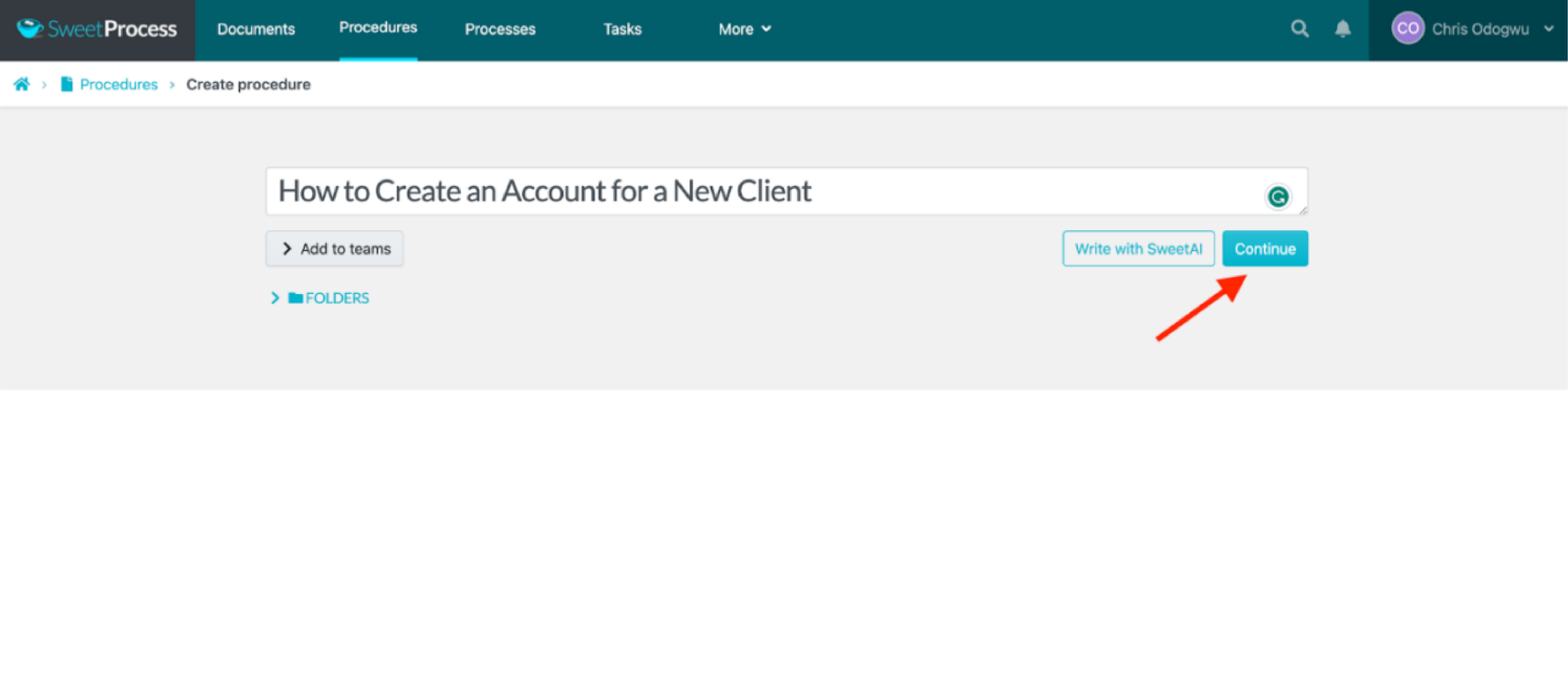
Click on the pencil icon by the title.
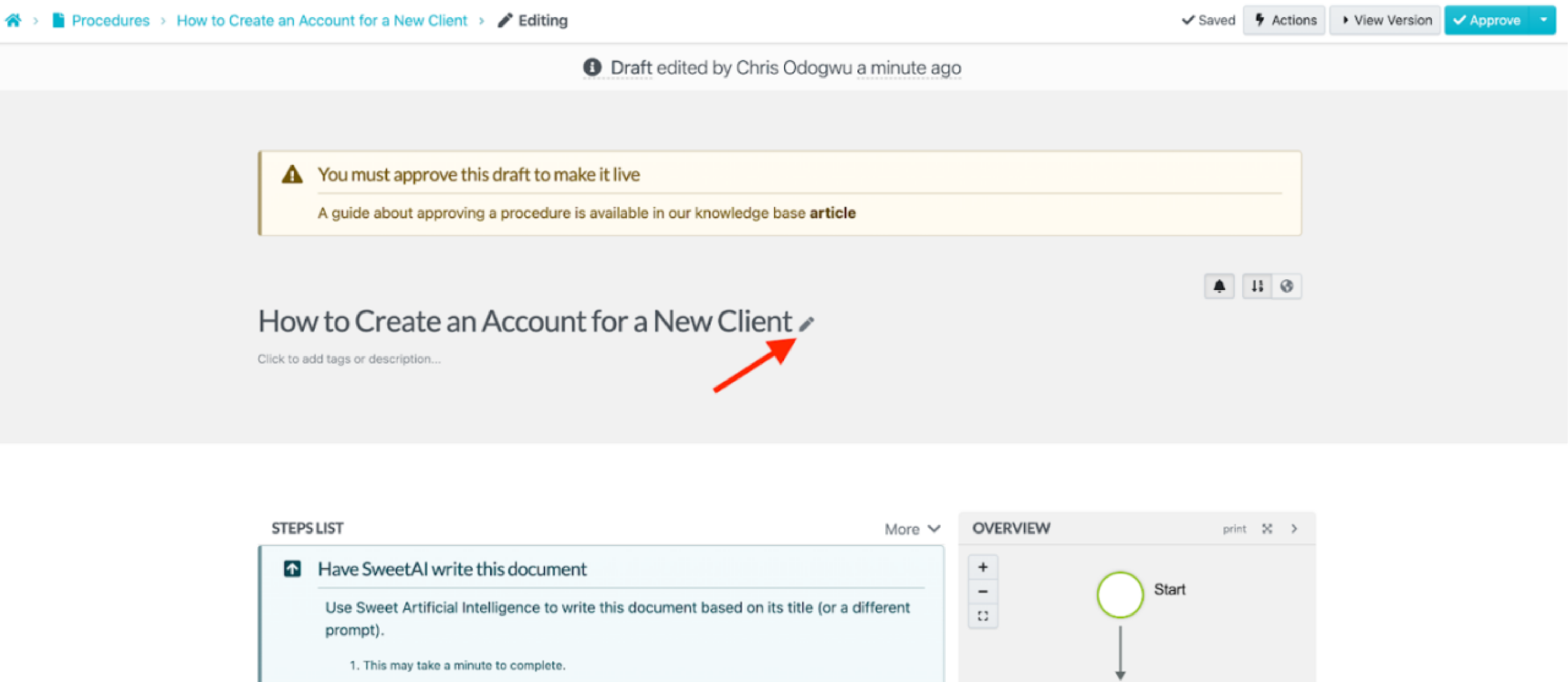
Enter the procedure details and click on “Finished Editing.”
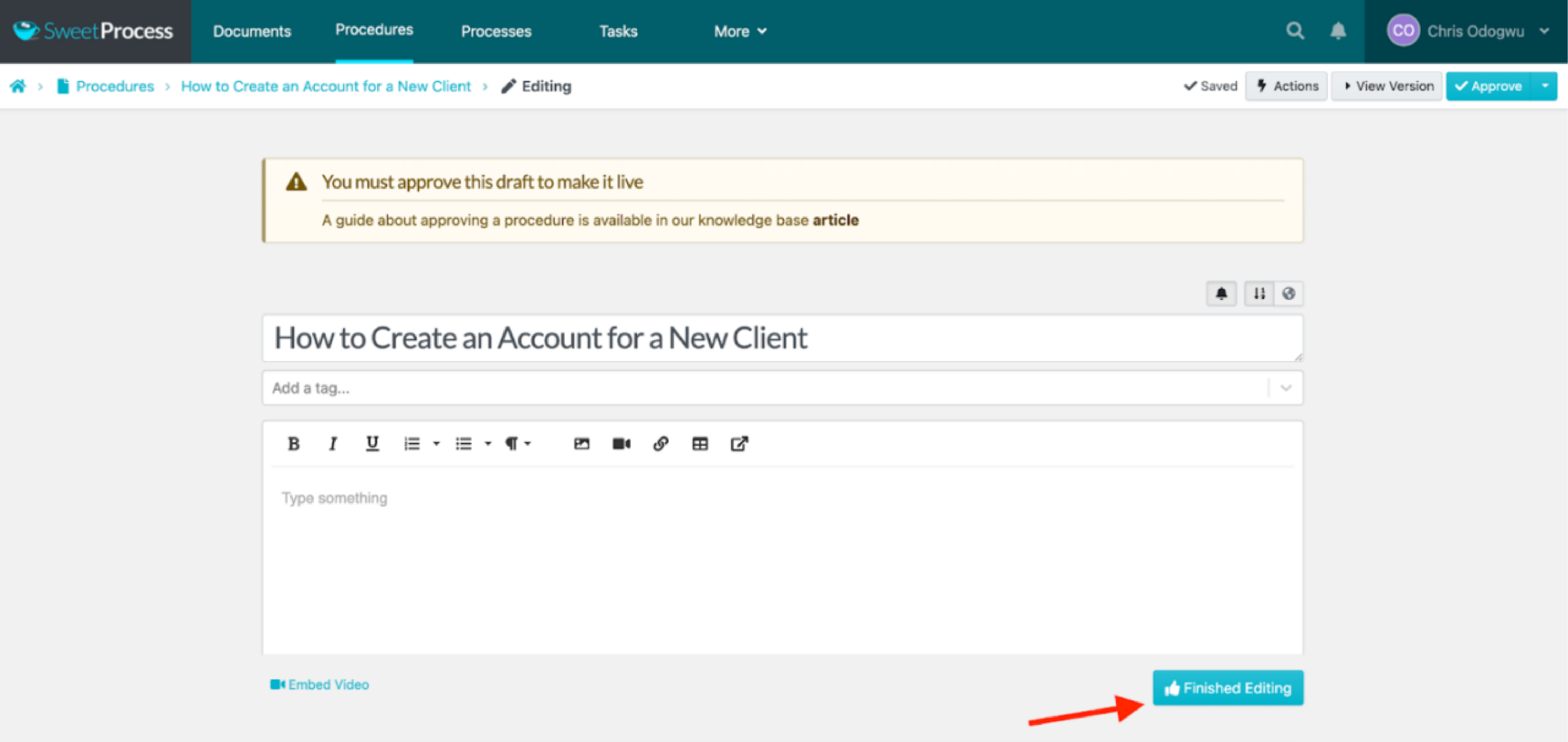
How to Document Your Company’s Procedures Automatically Using SweetProcess
Click on “Procedures” and “Create Procedure.”
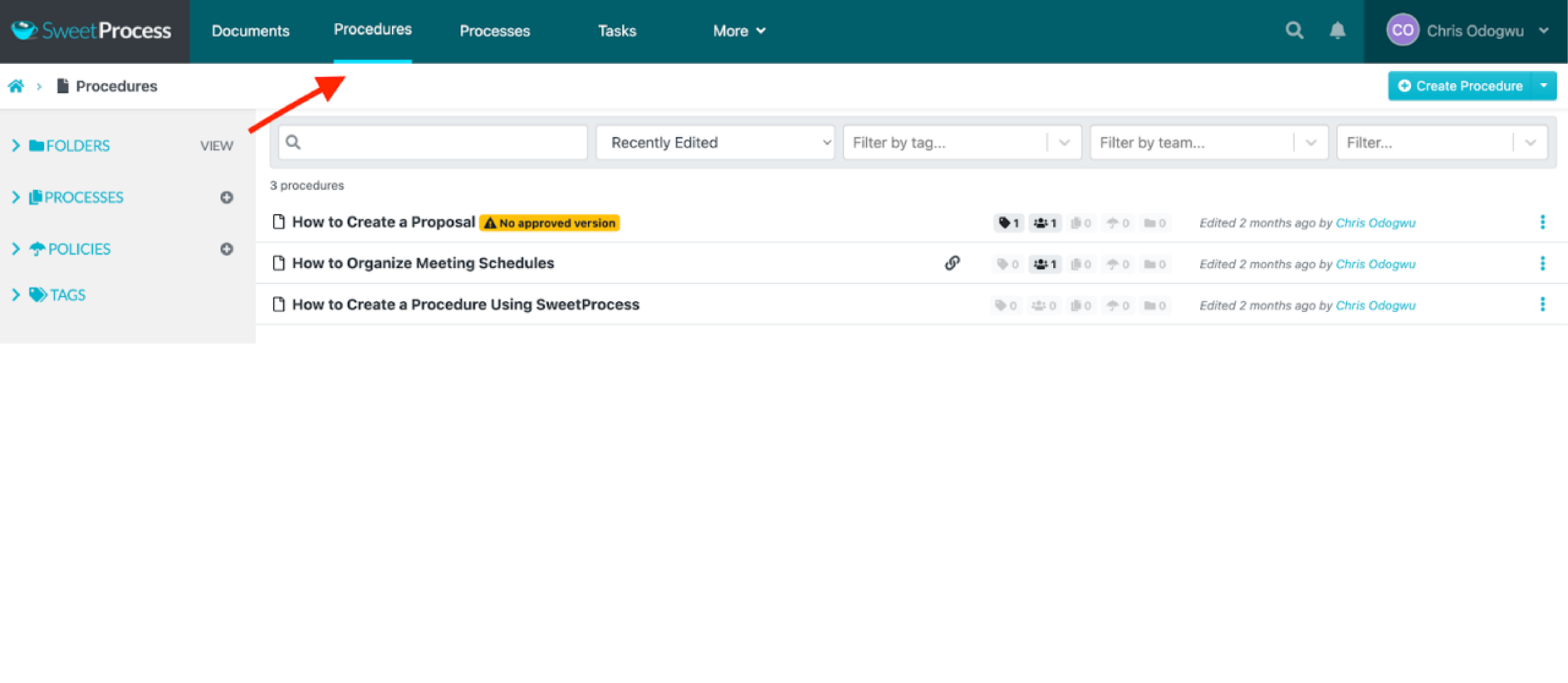
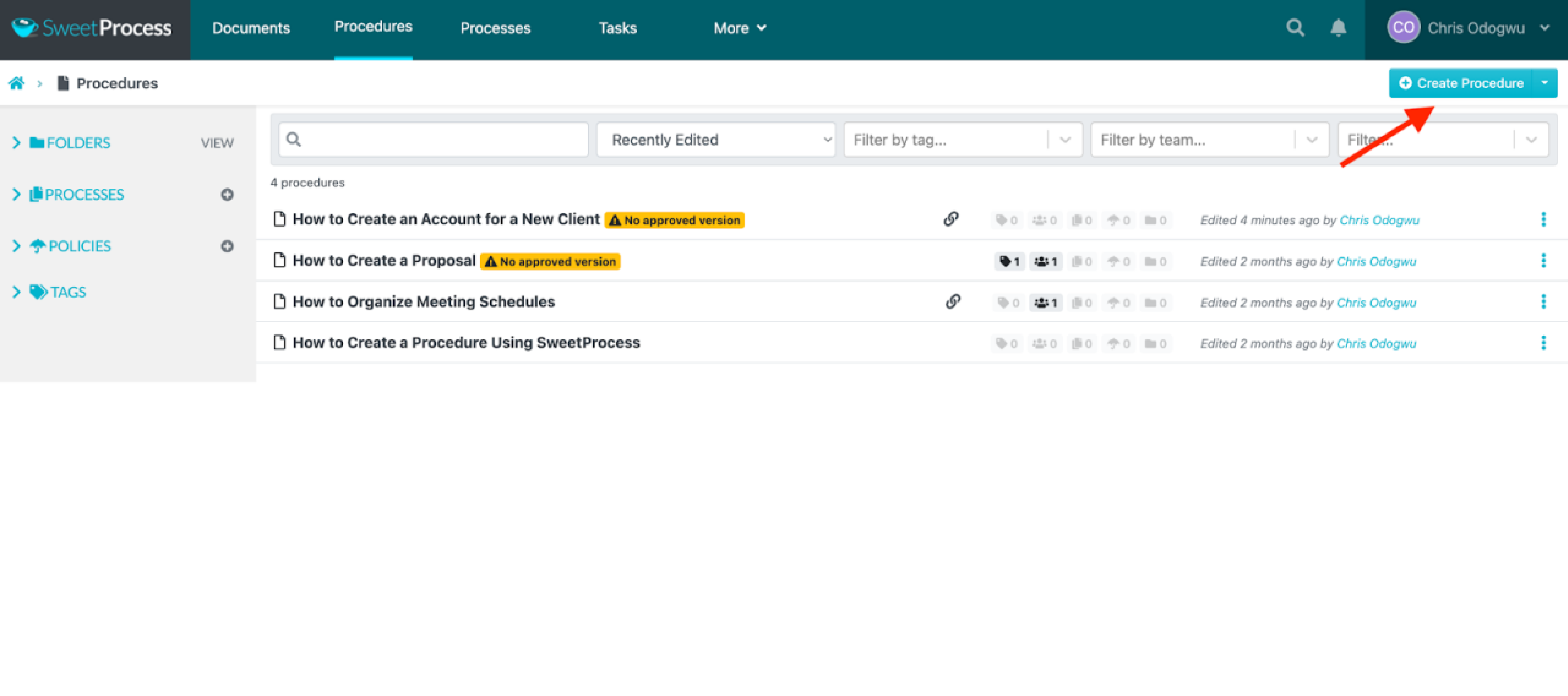
Enter the procedure title and click on “Write with SweetAI.”
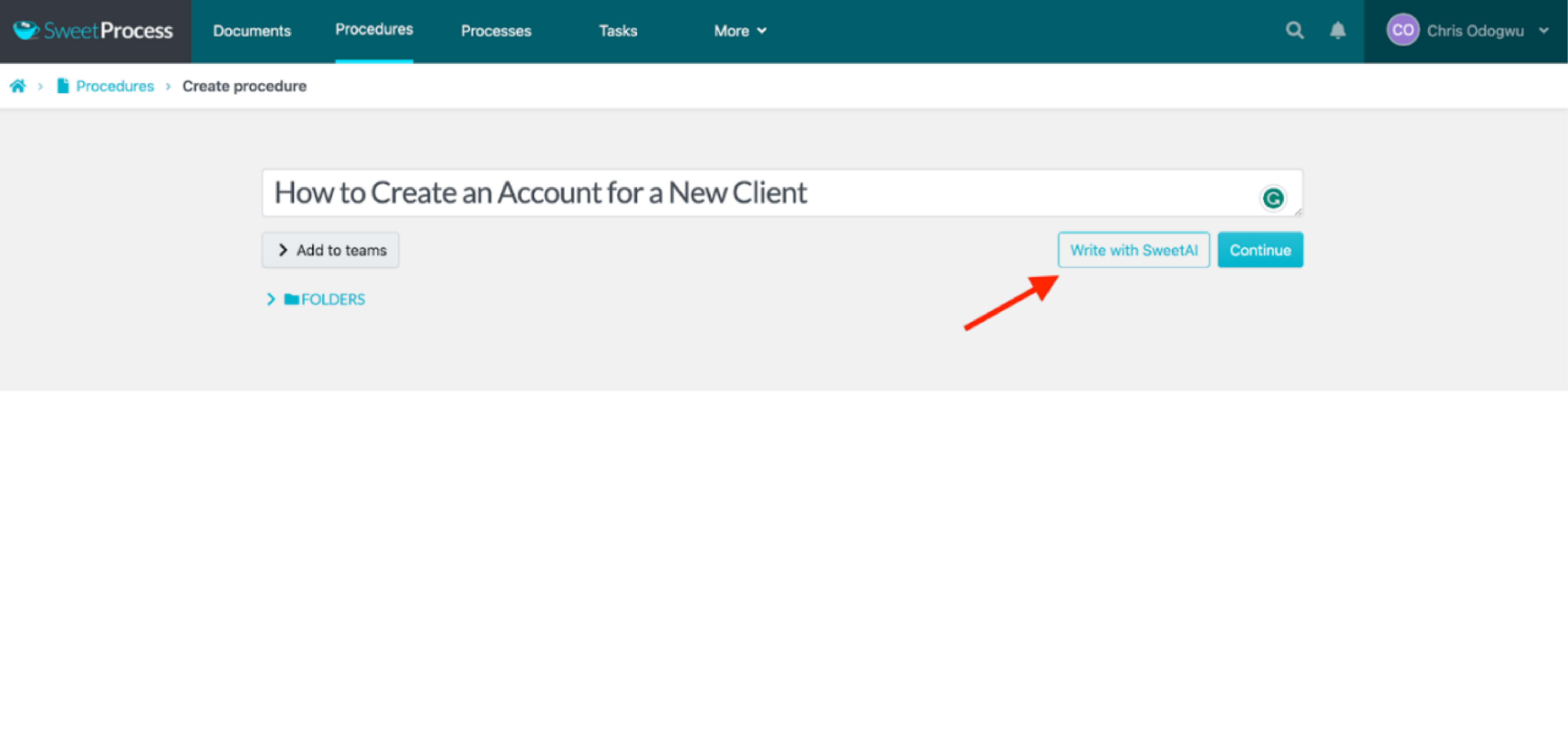
Click on the pencil icon to edit the content.
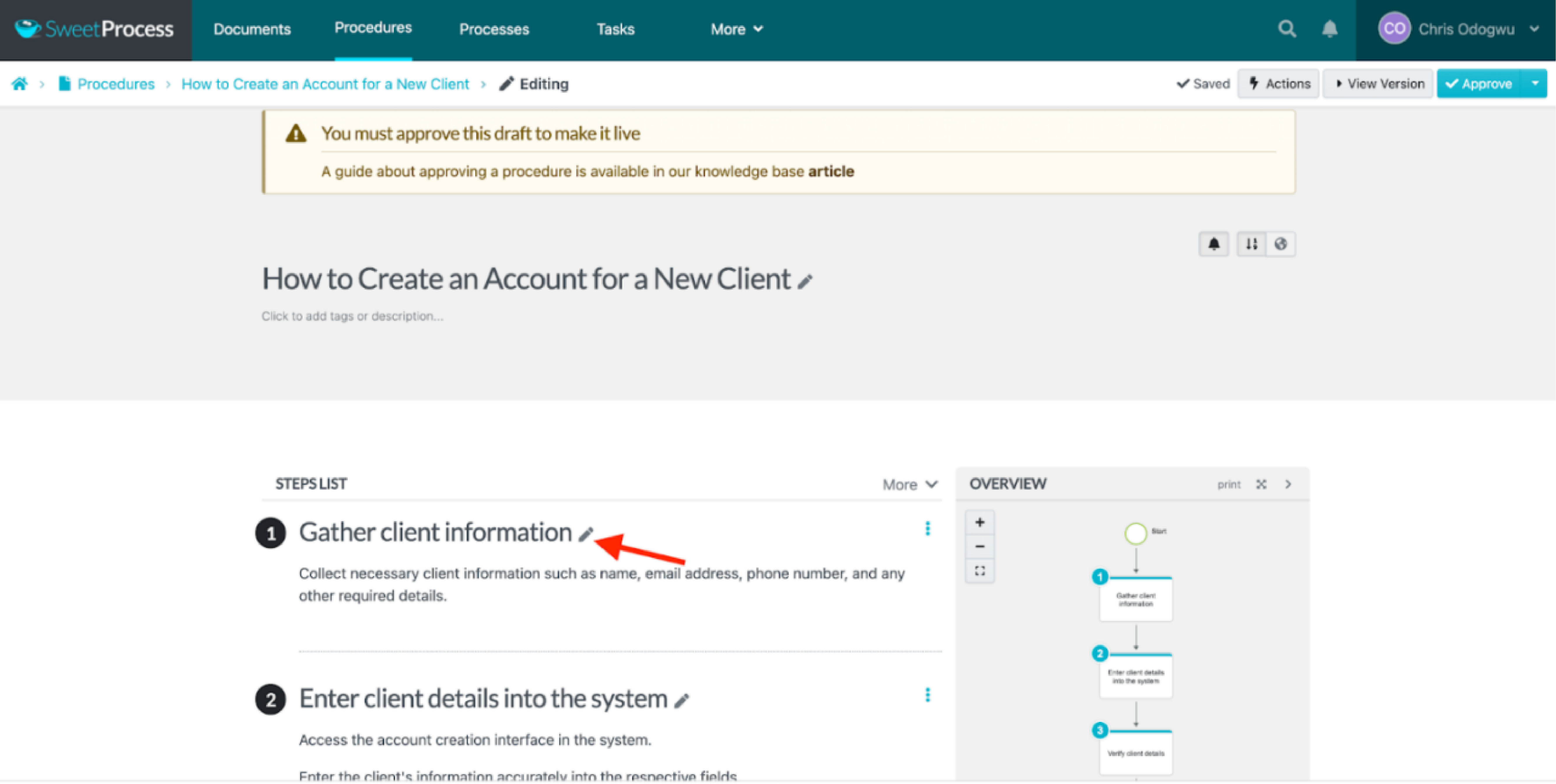
Click on “Approve” to publish the document.
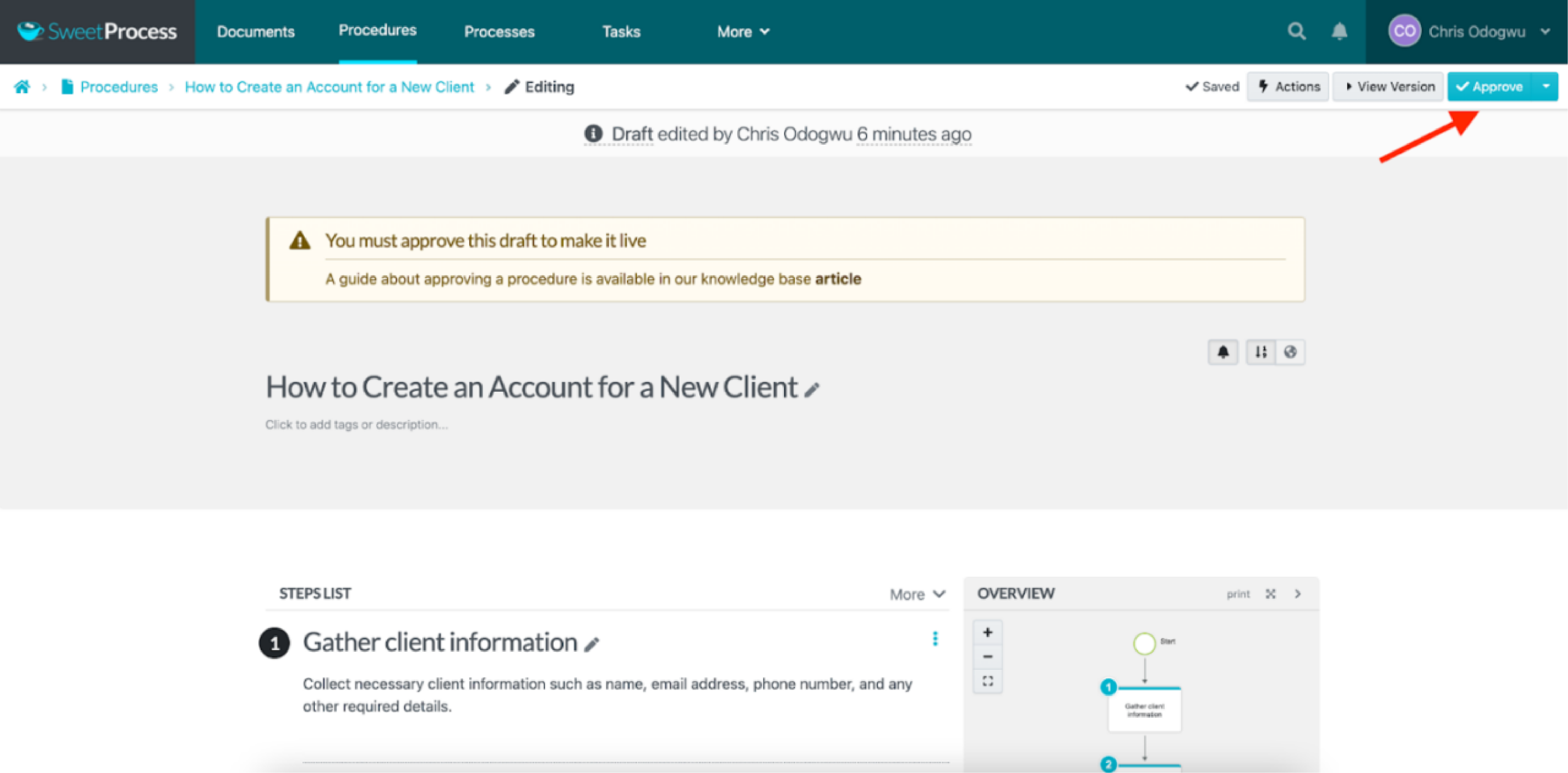
SweetProcess empowers organizations to document business procedures and create a solid knowledge base where team members can find work-related information. Information and technology (IT) company AEJuice leverages this feature in SweetProcess to empower its employees for high performance. The chief executive officer (CEO), Jacob Syrytsia, states that each department has a designated knowledge base. Anyone who has a question about operations in their department can find the answer in SweetProcess.
“Whenever someone asks, ‘How do I use this tool?’ I just send them a link, and it saves me about an hour of explaining,” Jacob says.
SweetProcess also simplifies and speeds up employee training in the organization due to its convenient and self-based learning feature. Jacob reveals that this enables his new employees to get the hang of things quickly.
“When somebody joins, I send them some links to SweetProcess and say just watch this, read this, and get back to me when you are ready. It’s like self-based training.”
How to Document Your Company’s Processes Using SweetProcess
Click on “Processes” and “Create Process.”
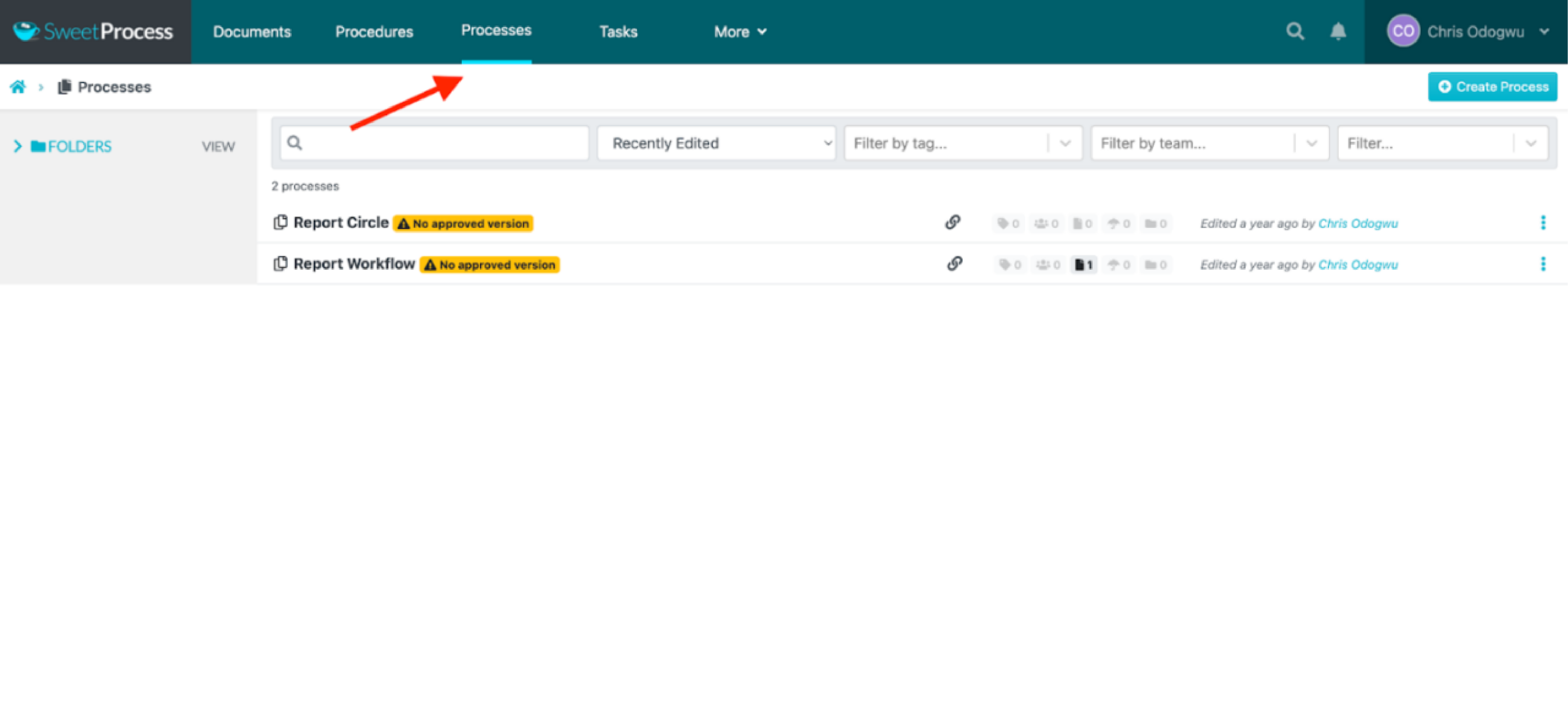
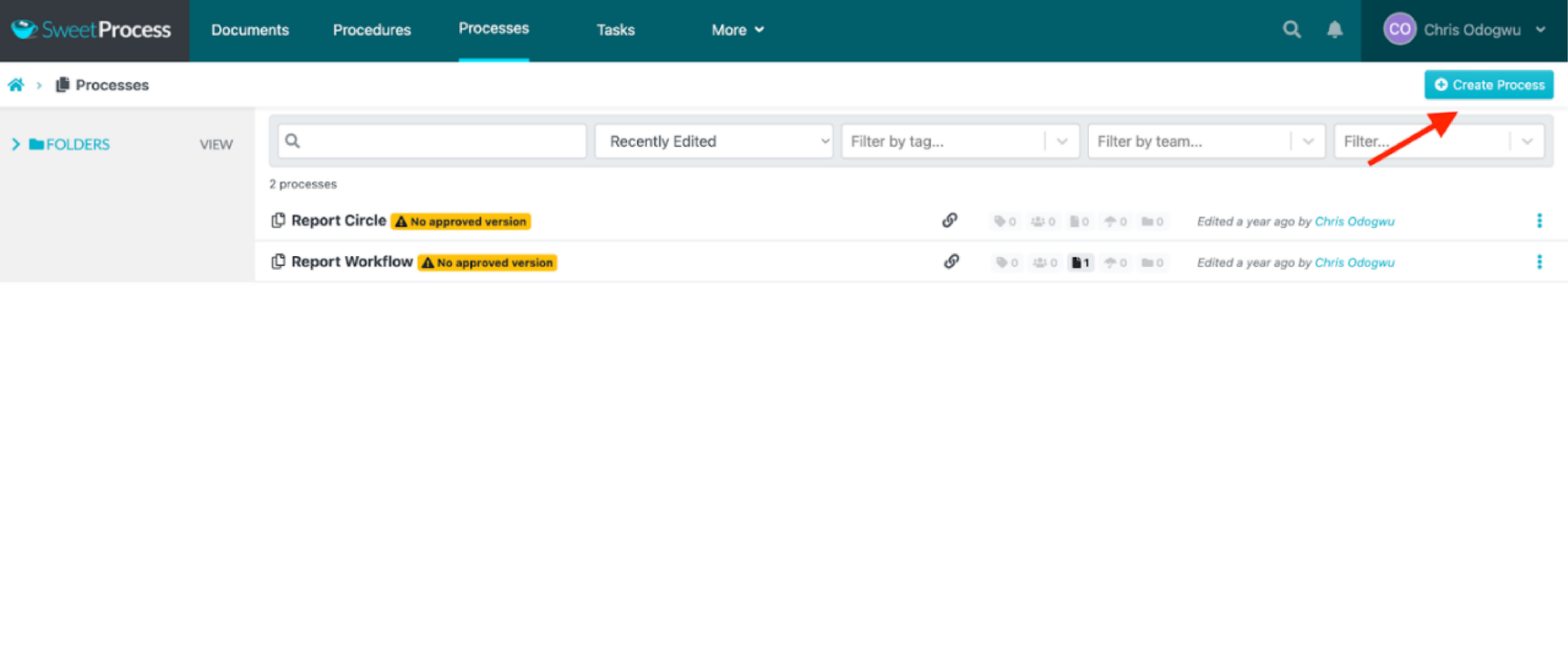
Enter the process title and click on “Continue.”
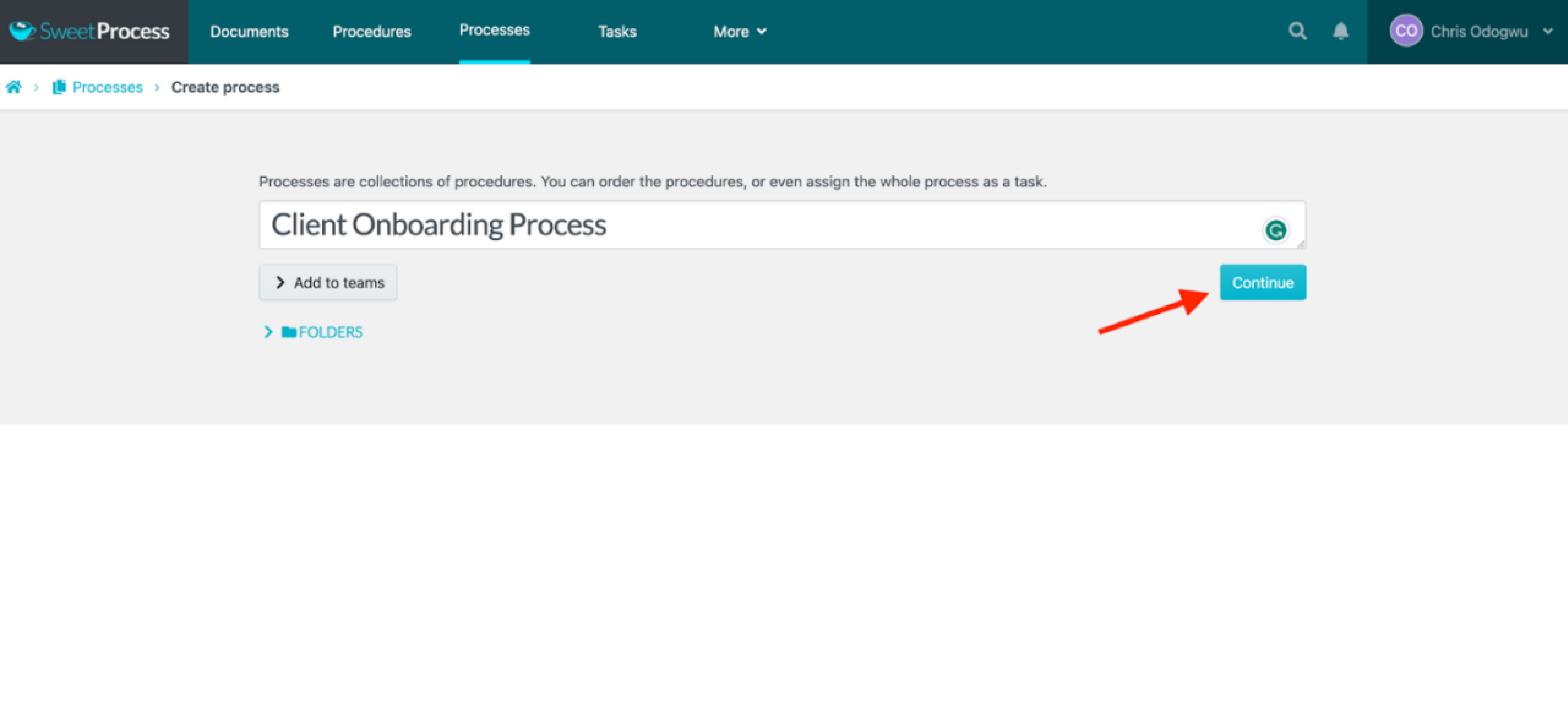
Click on “Add Step.”
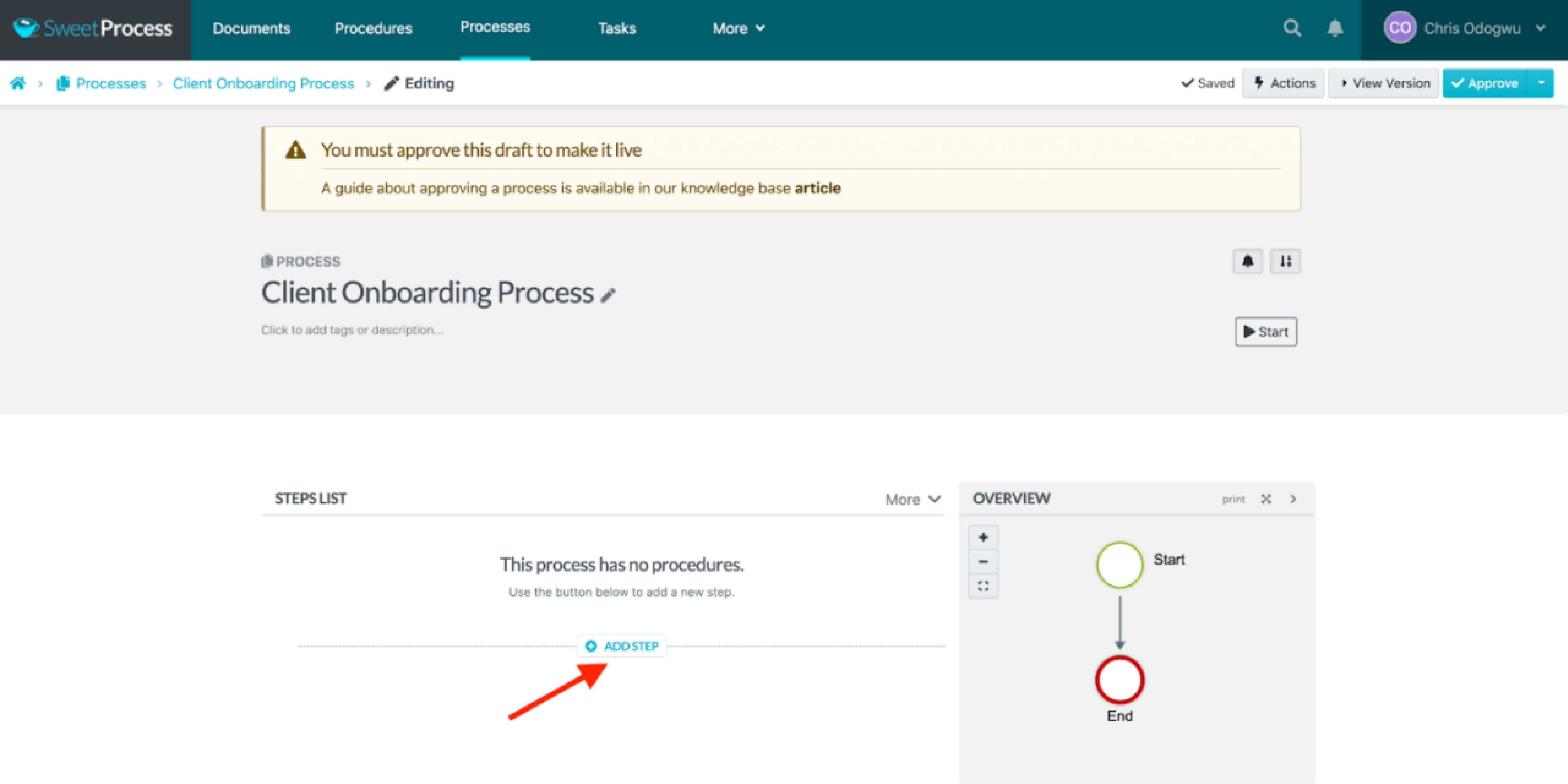
Click on “Procedure.”
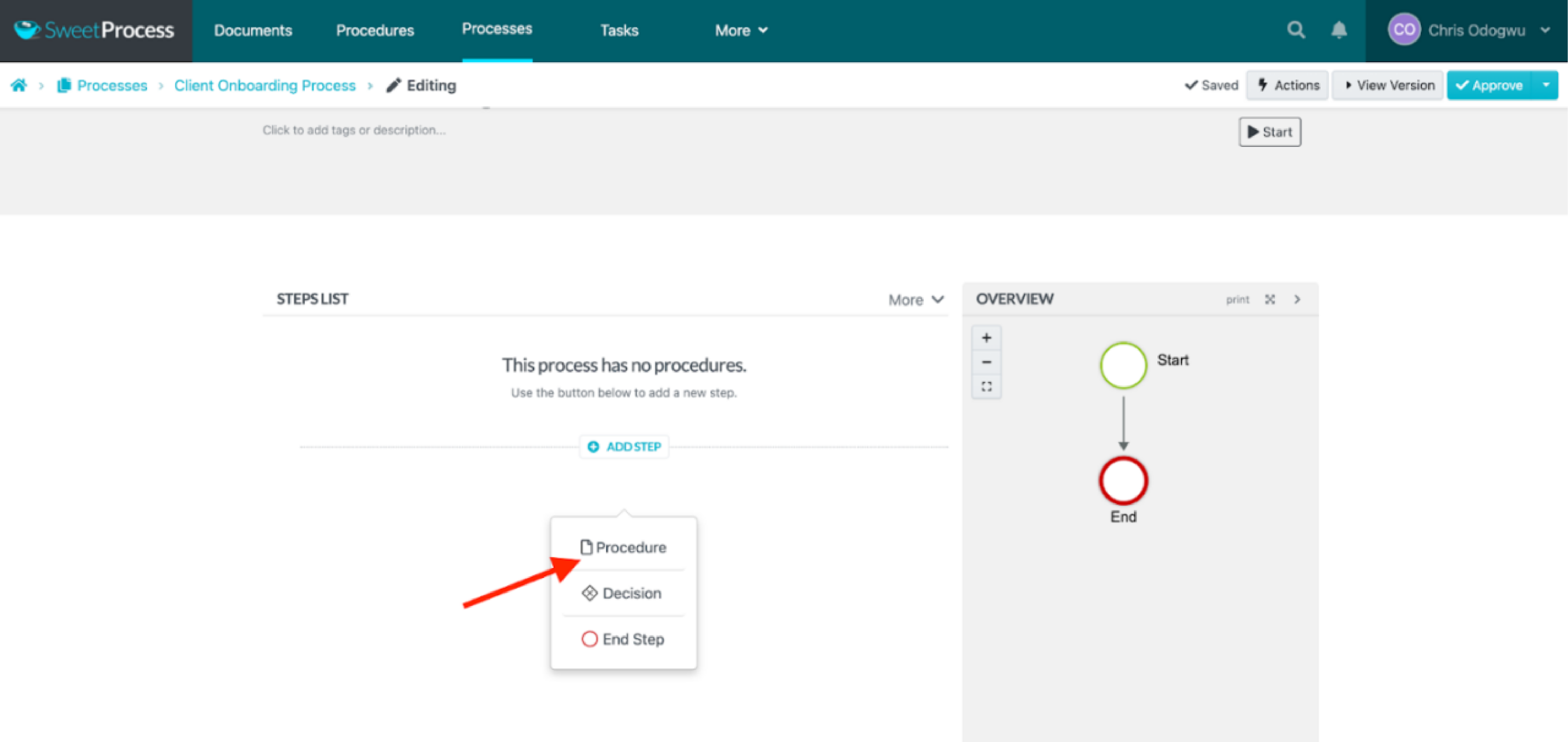
Select the procedure from the drop-down menu.
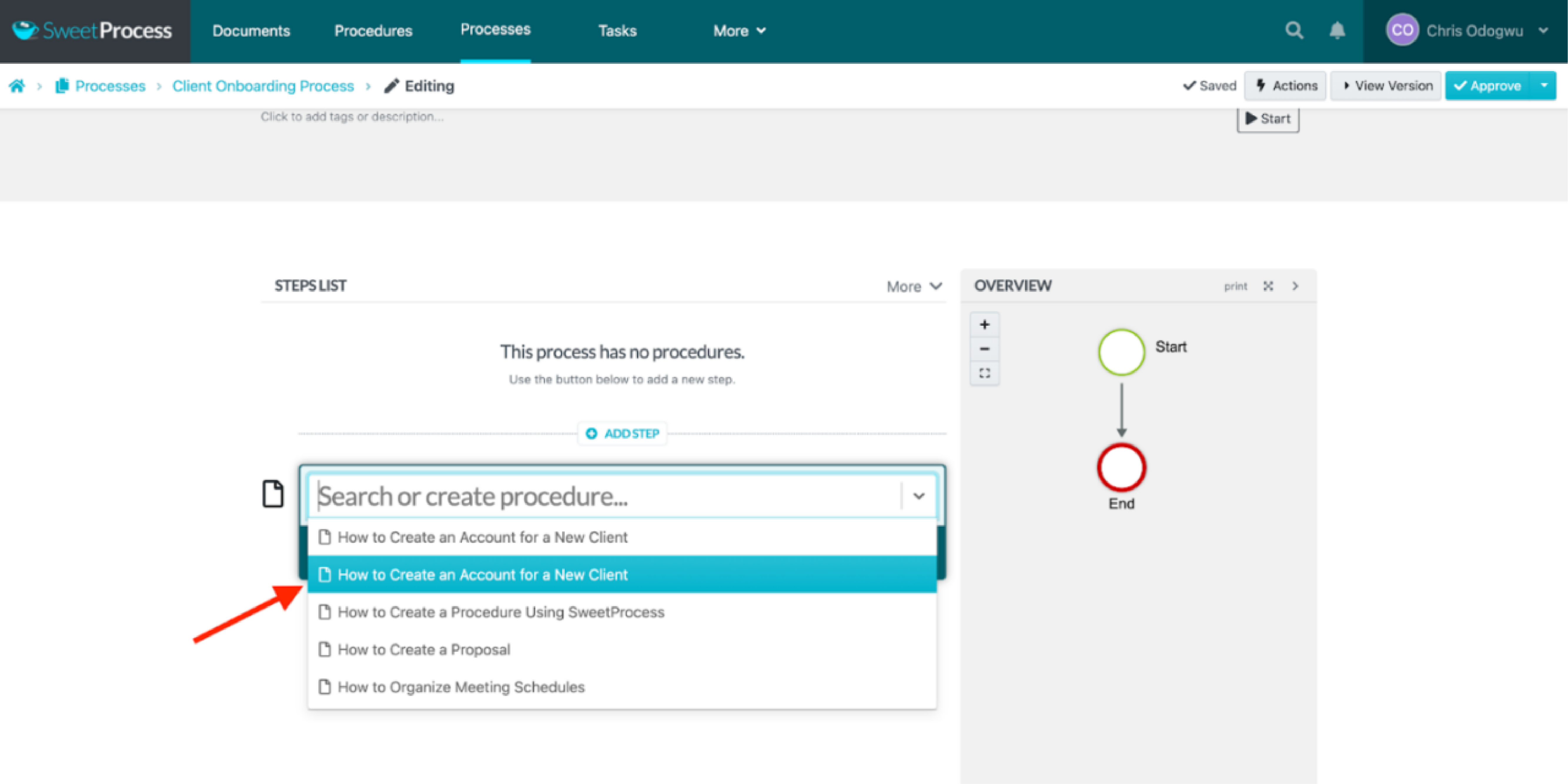
Click on “Add Step” and “Procedure” to add a step.
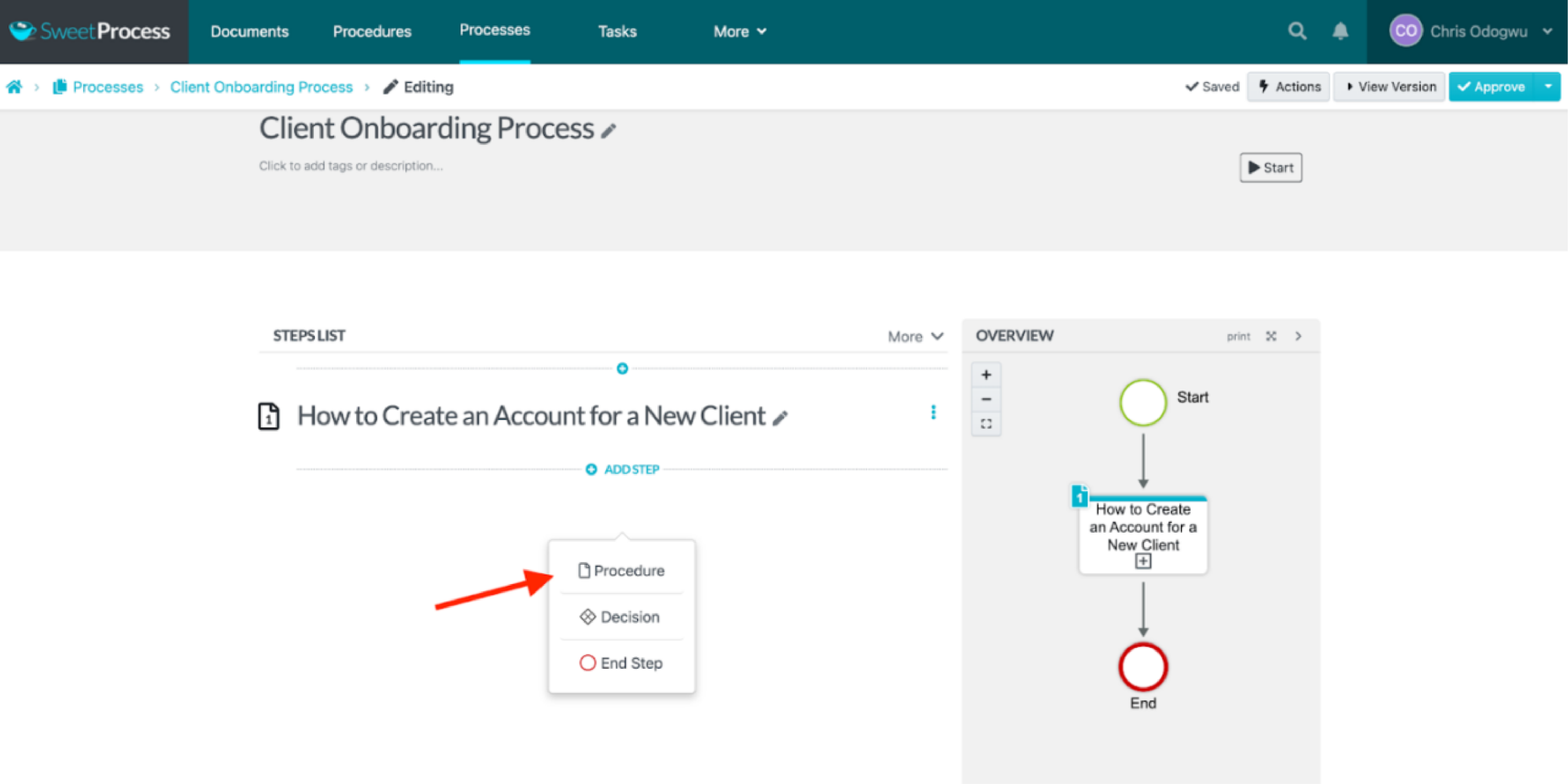
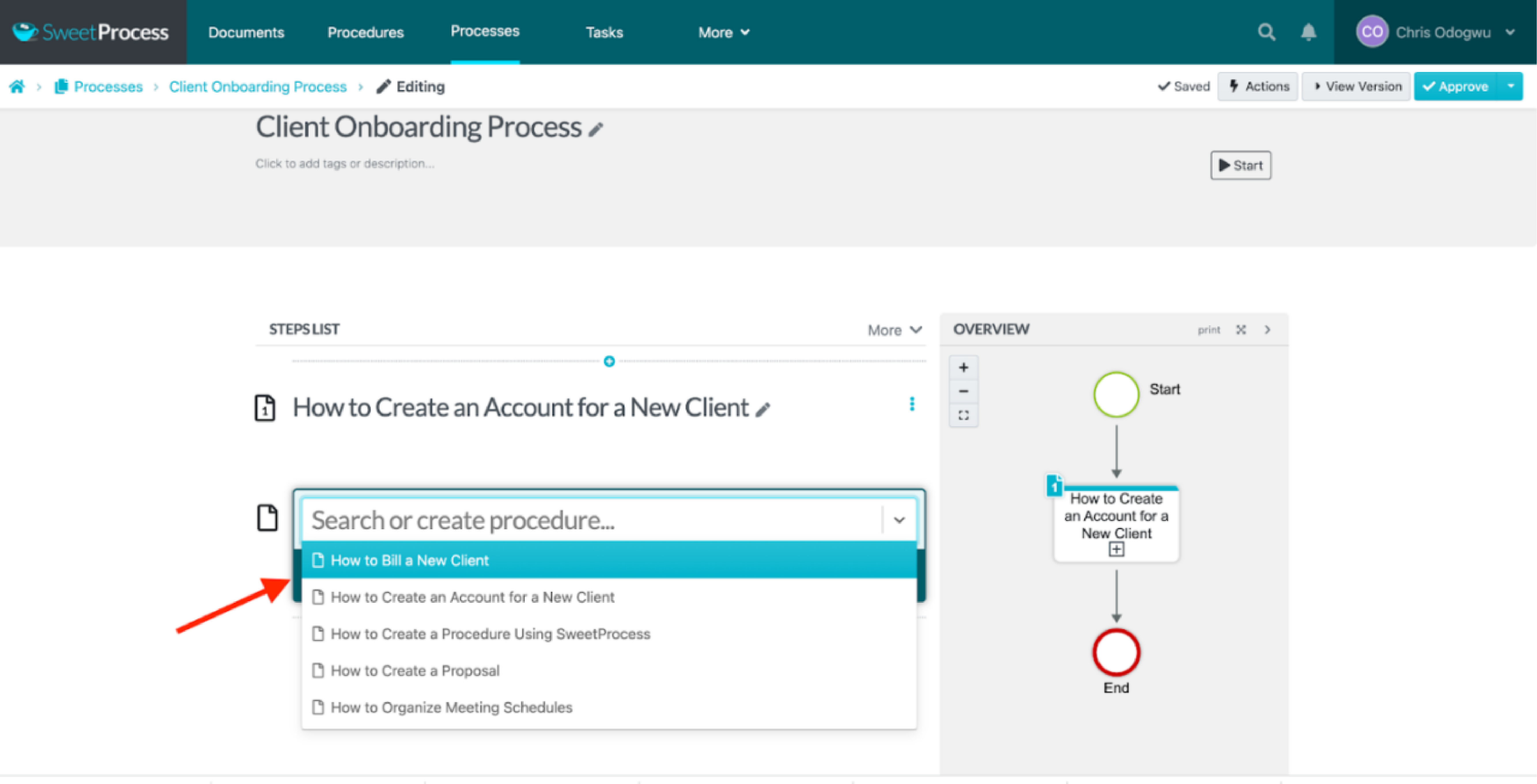
Click on “Approve” to publish your process.
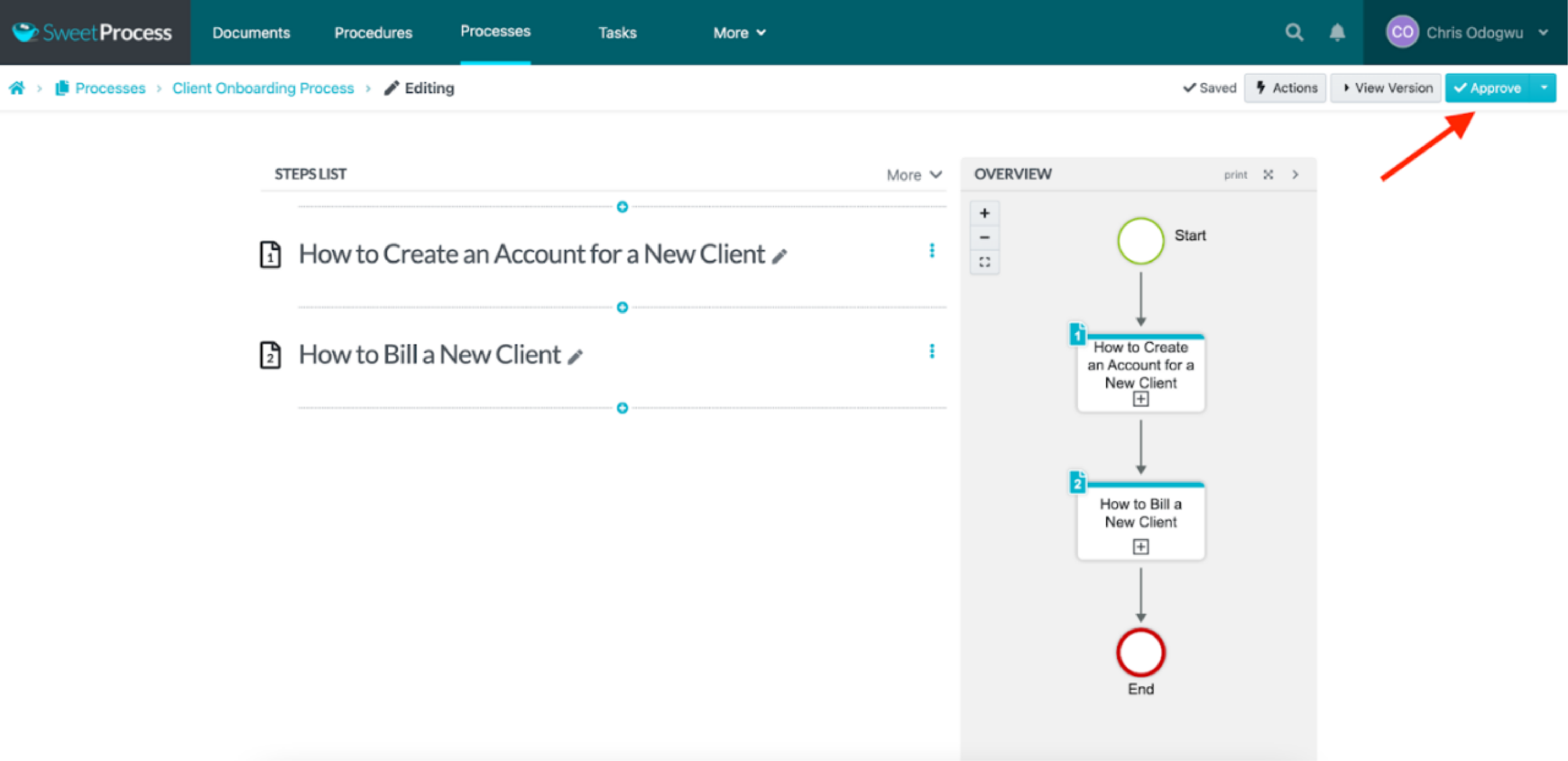
How to Document Your Company’s Policies Manually Using SweetProcess
Click on “More.”
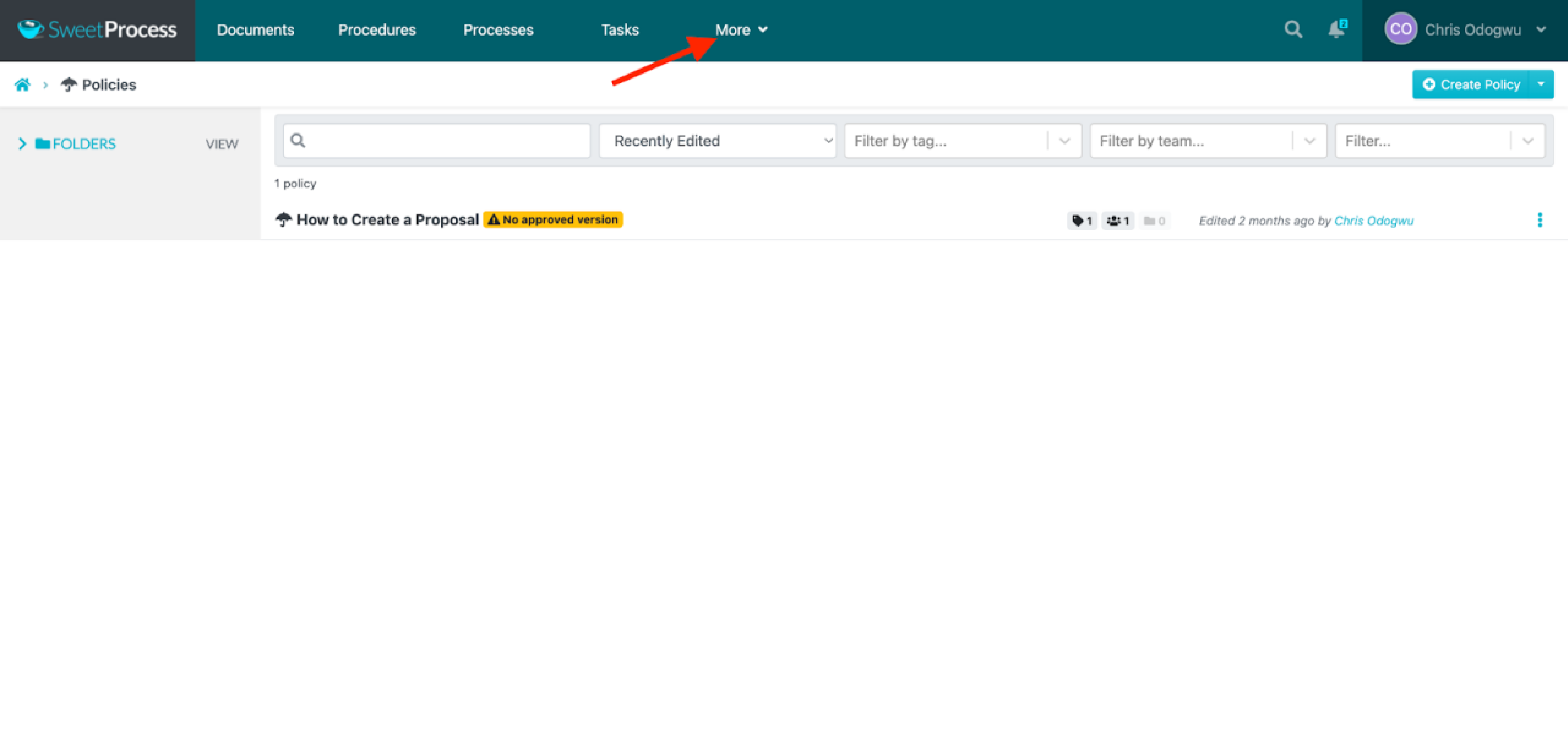
Click on “Policies.”
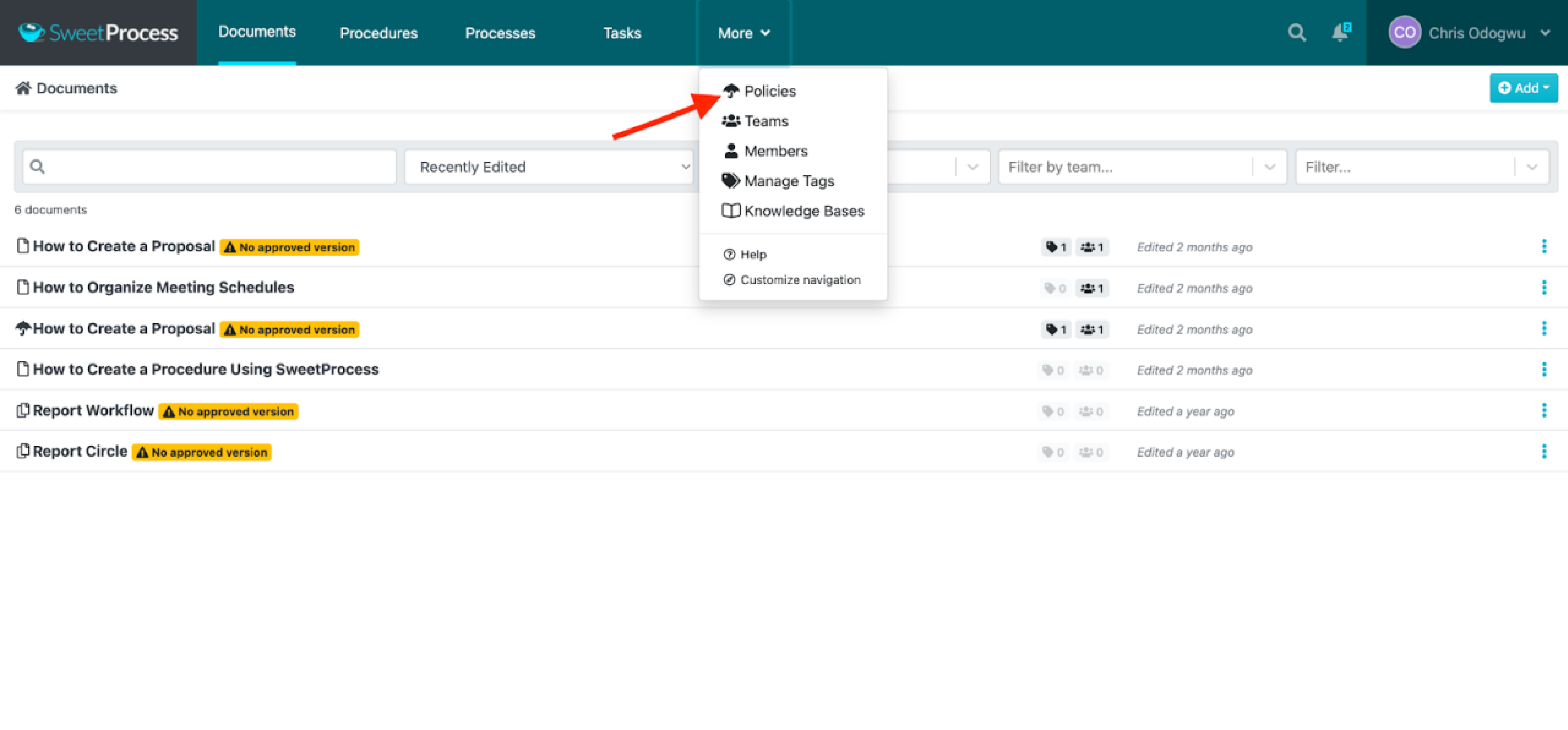
Click on “Create Policy.”
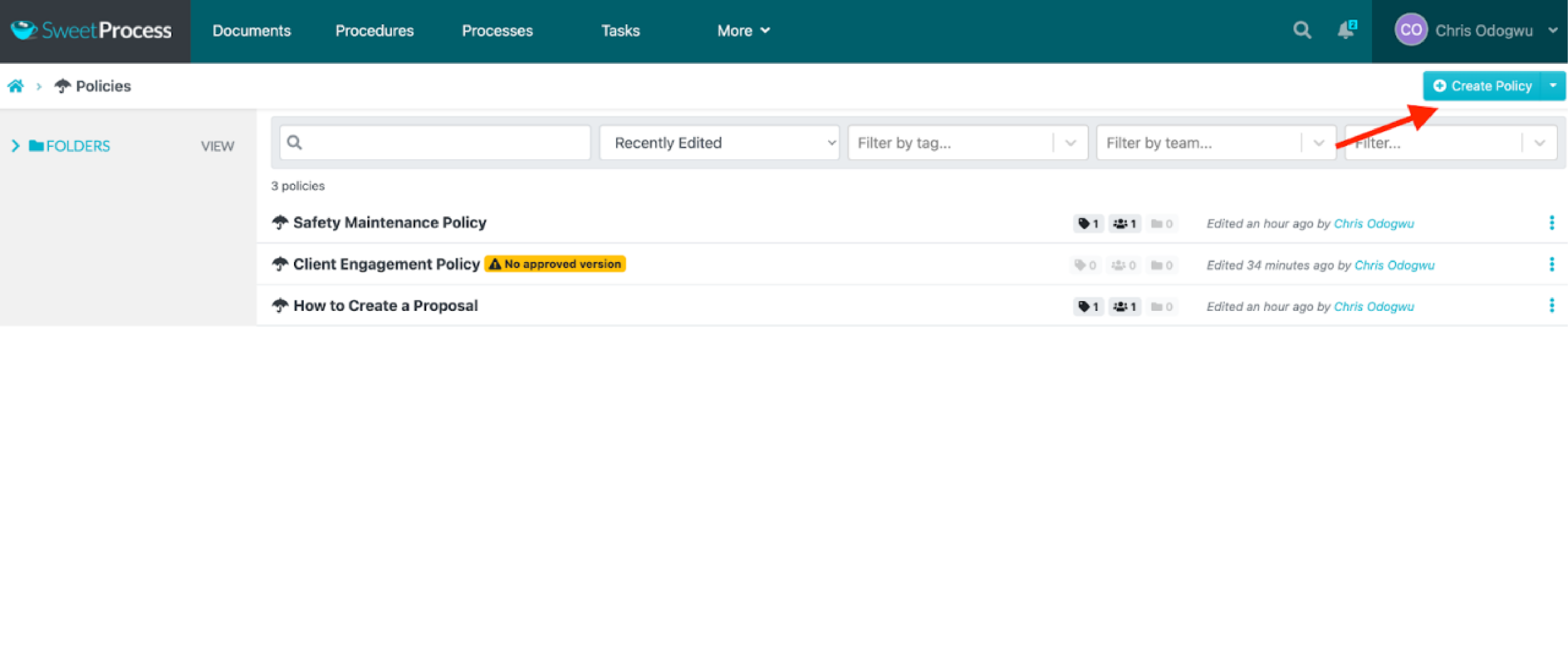
Write the policy title in the space and click on “Continue.”
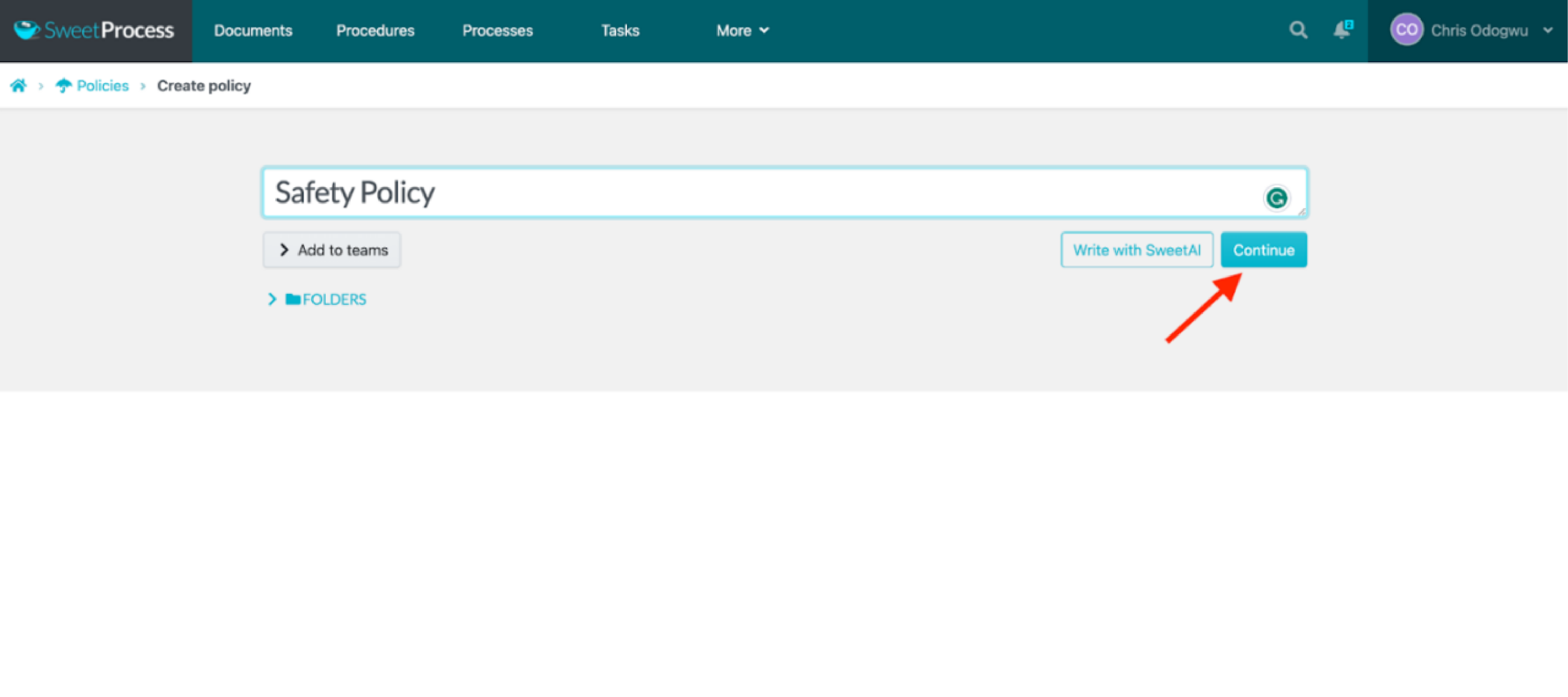
Click on the pencil icon to develop your policy.
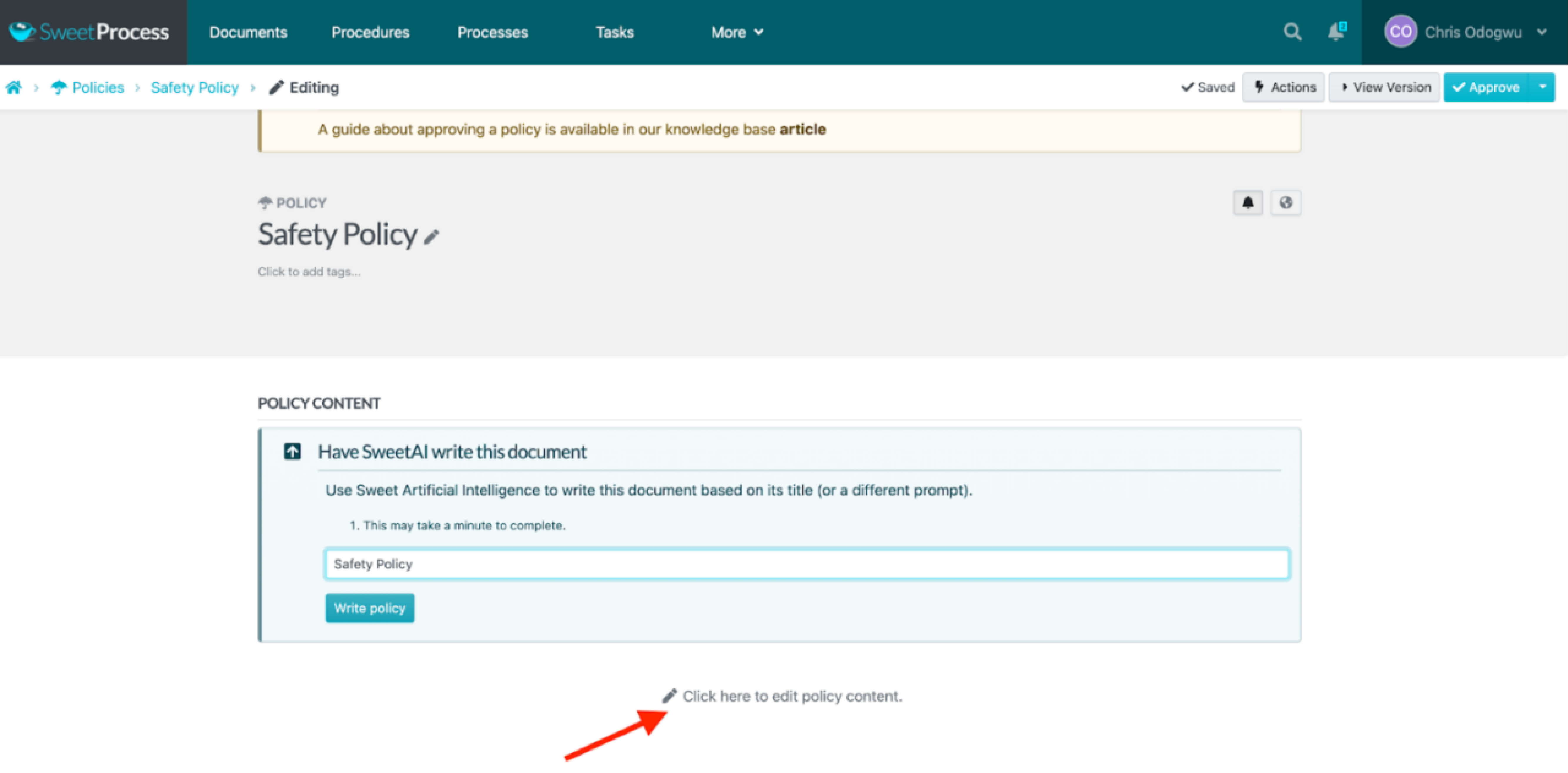
Write your policy and click on “Save changes.” You can combine texts, images, videos, etc.
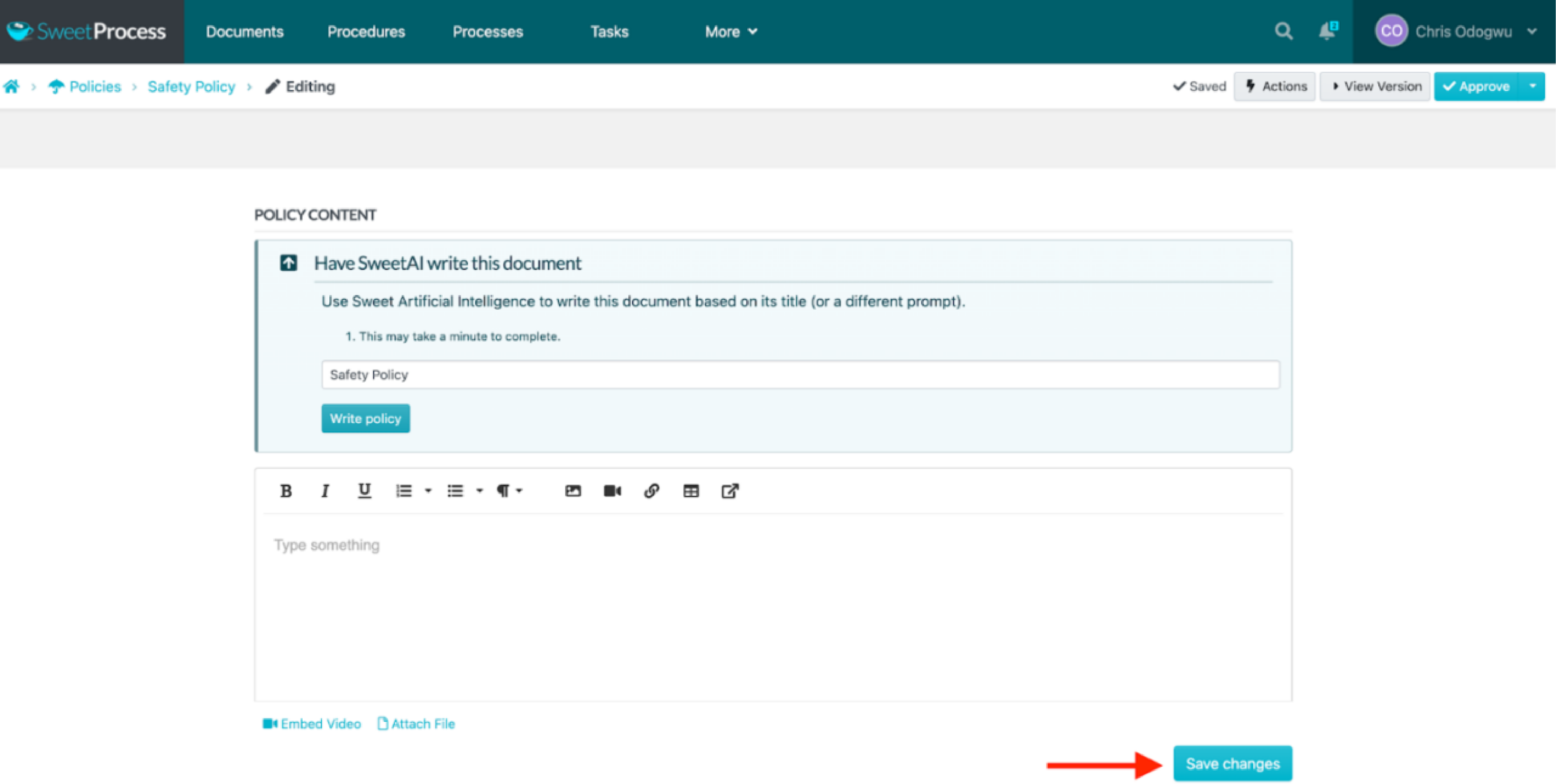
How to Document Your Company’s Policies Automatically Using SweetProcess
Click on “More.”
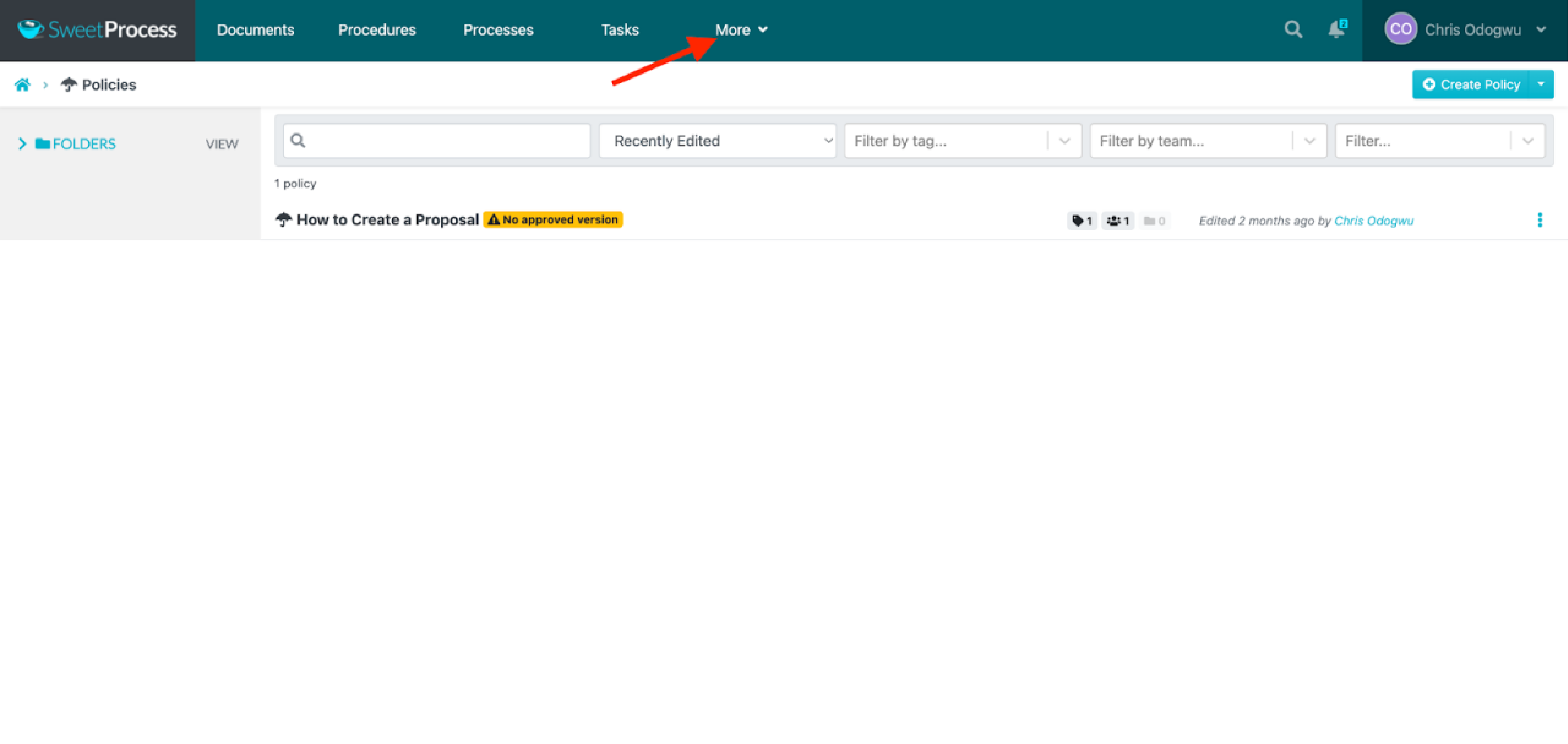
Select “Policies” and click on “Create Policy.”
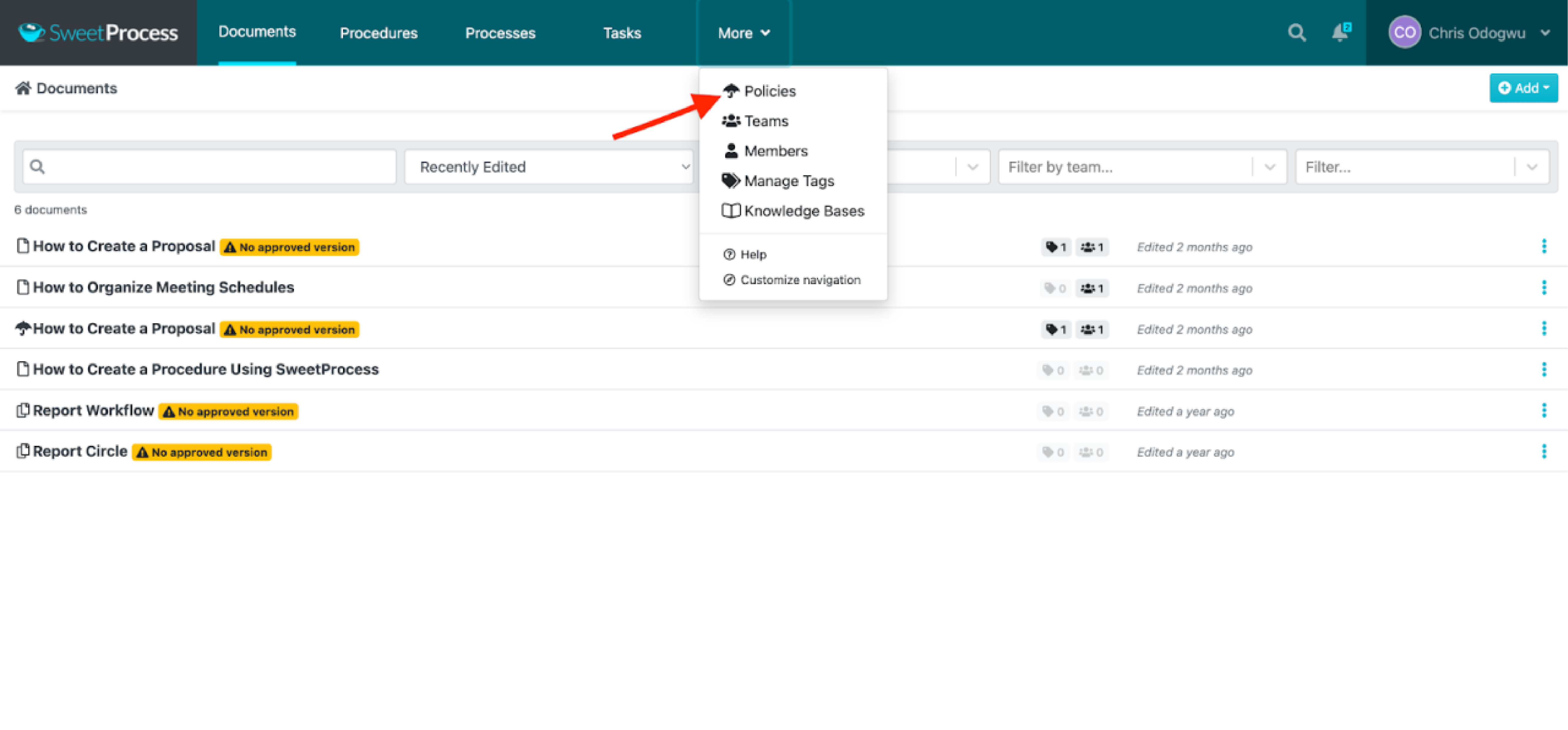
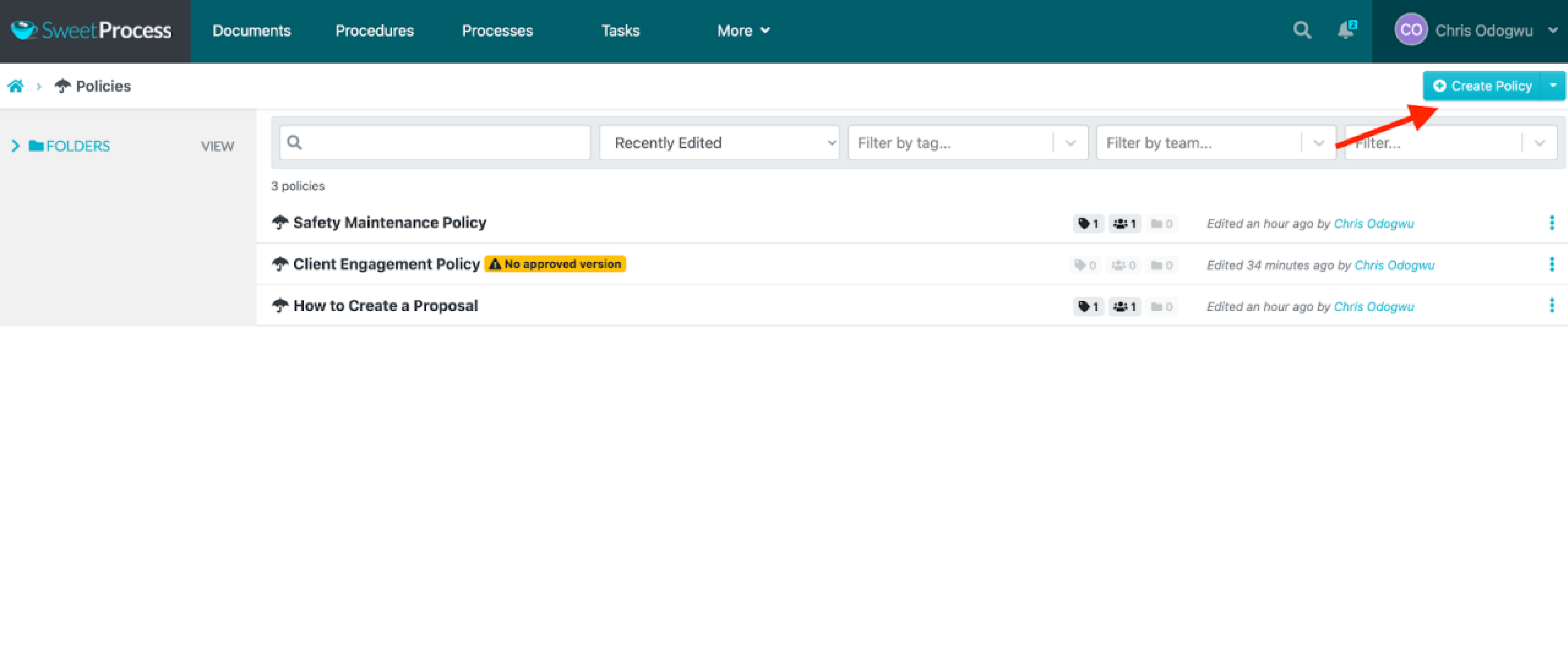
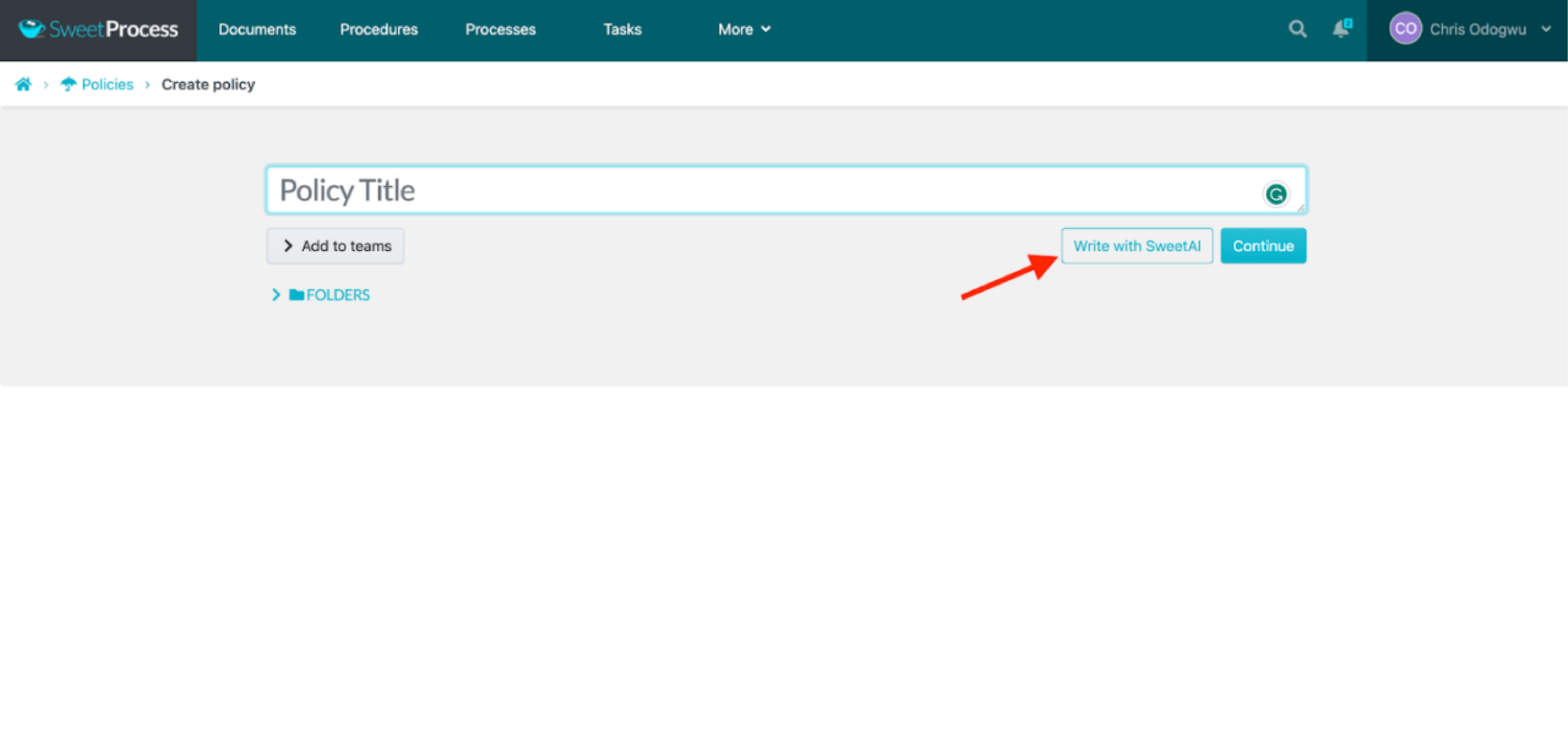
Enter the policy title and click on “Write with SweetAI.”
How to Manage Your Company’s Procedures, Processes, and Policies Using SweetProcess
Open the policy, procedure, or process and click “Actions.”
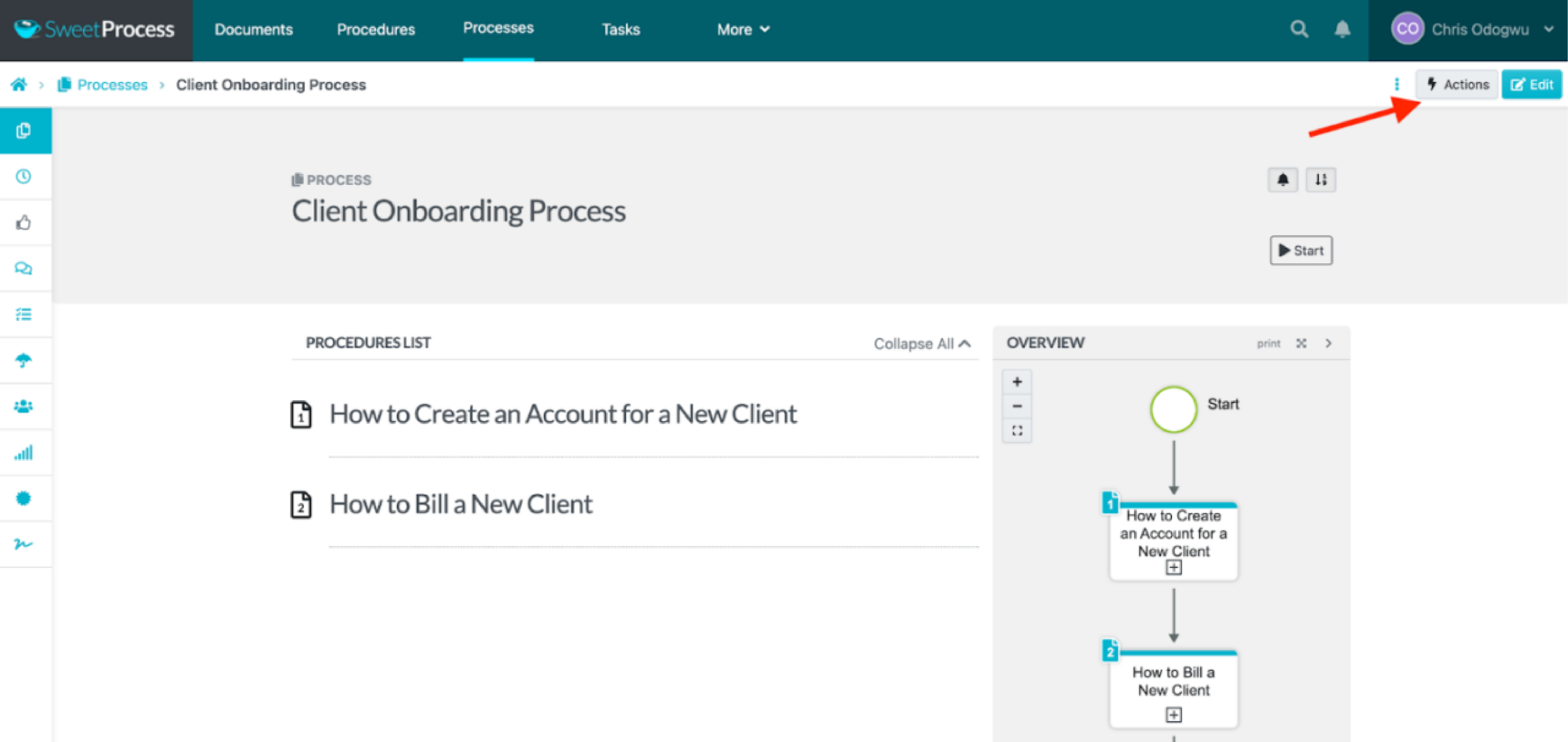
Select the action you want to perform from the drop-down menu. Click on “Assign as Task” to assign the document as a task.
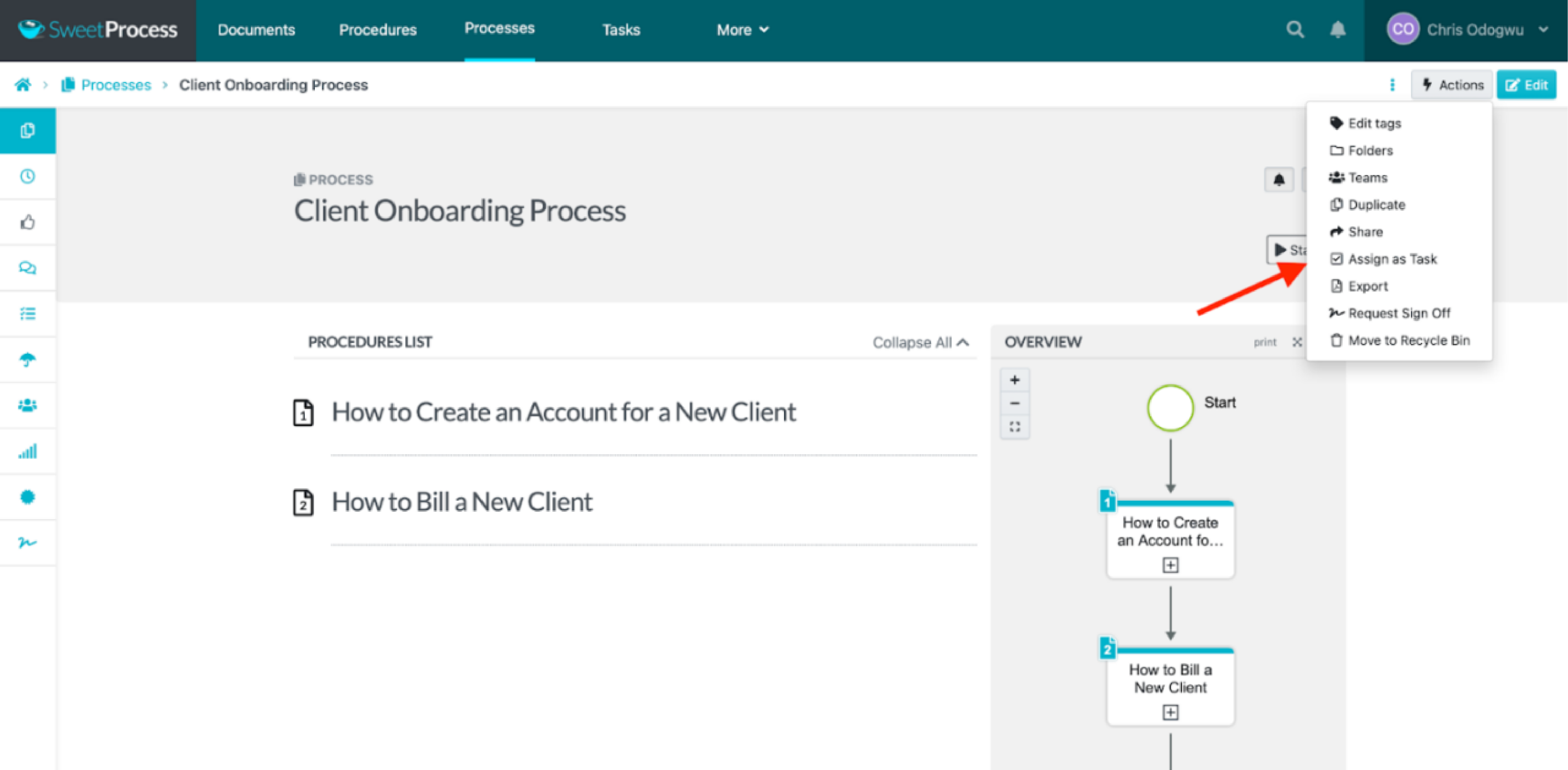
Click on “Assign.”
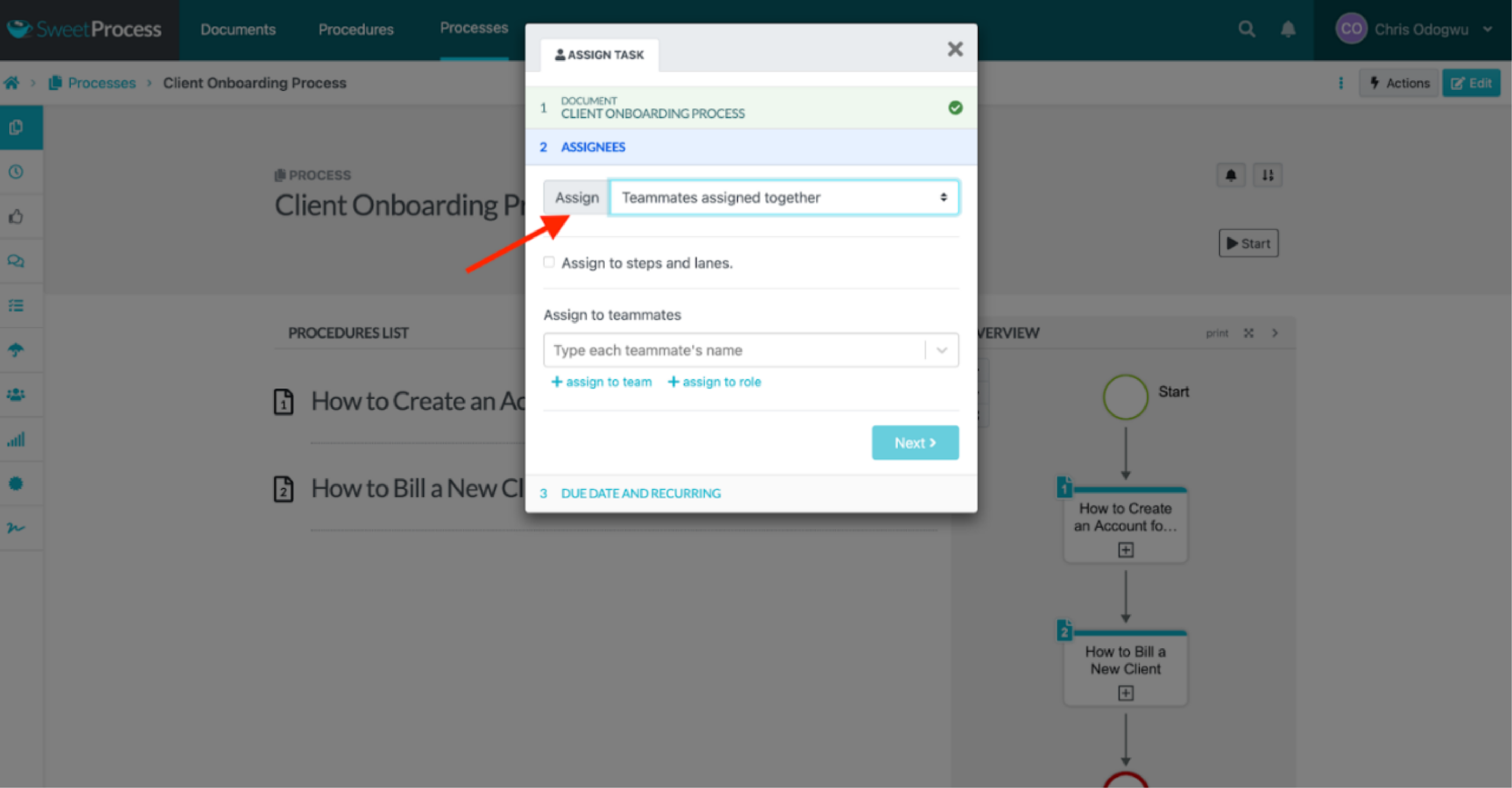
Click on “Teammates assigned their own task” to assign the task to one person, or click on “Teammates assigned together” to assign the task to multiple people.
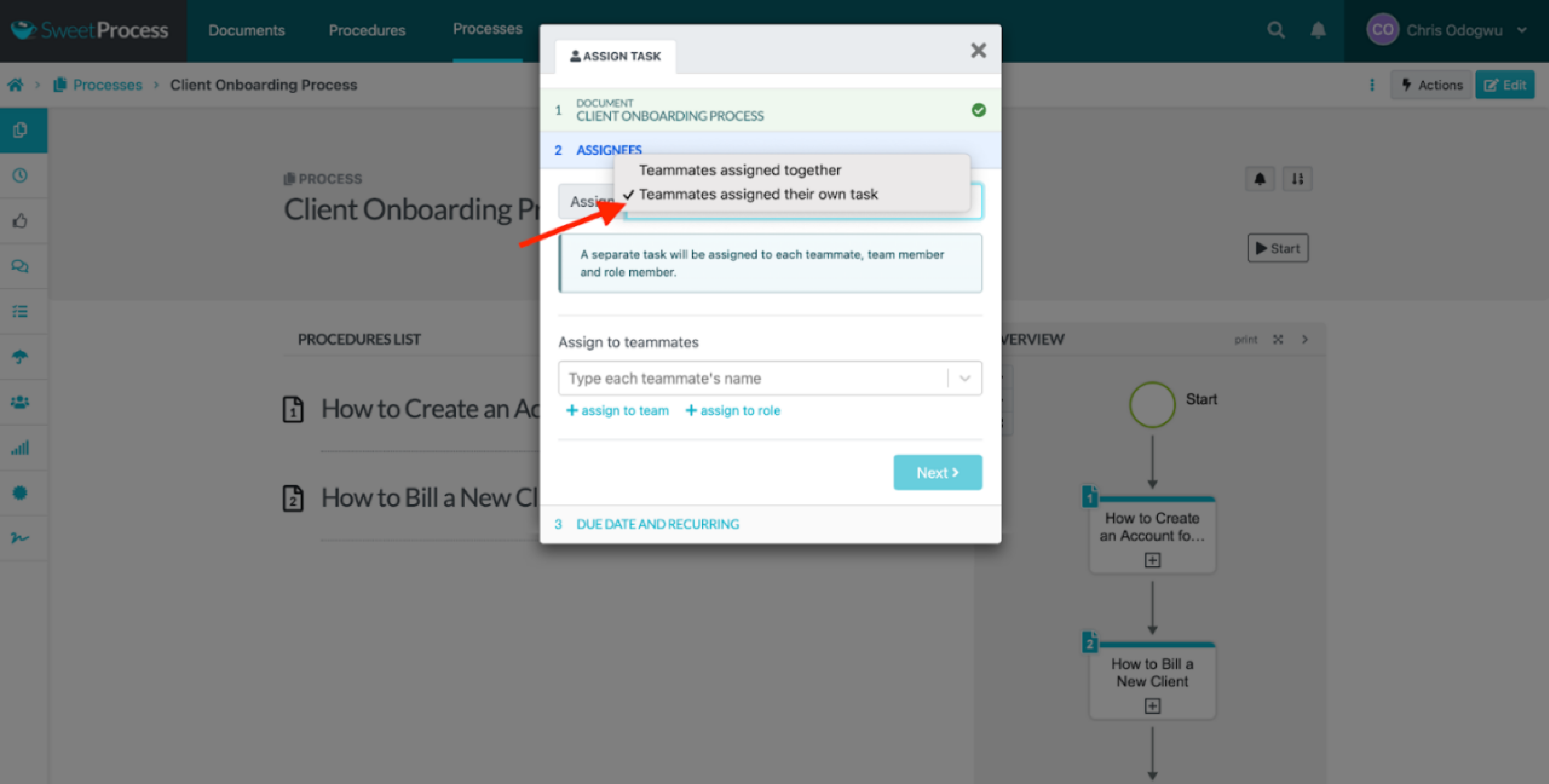
Select the teammate.
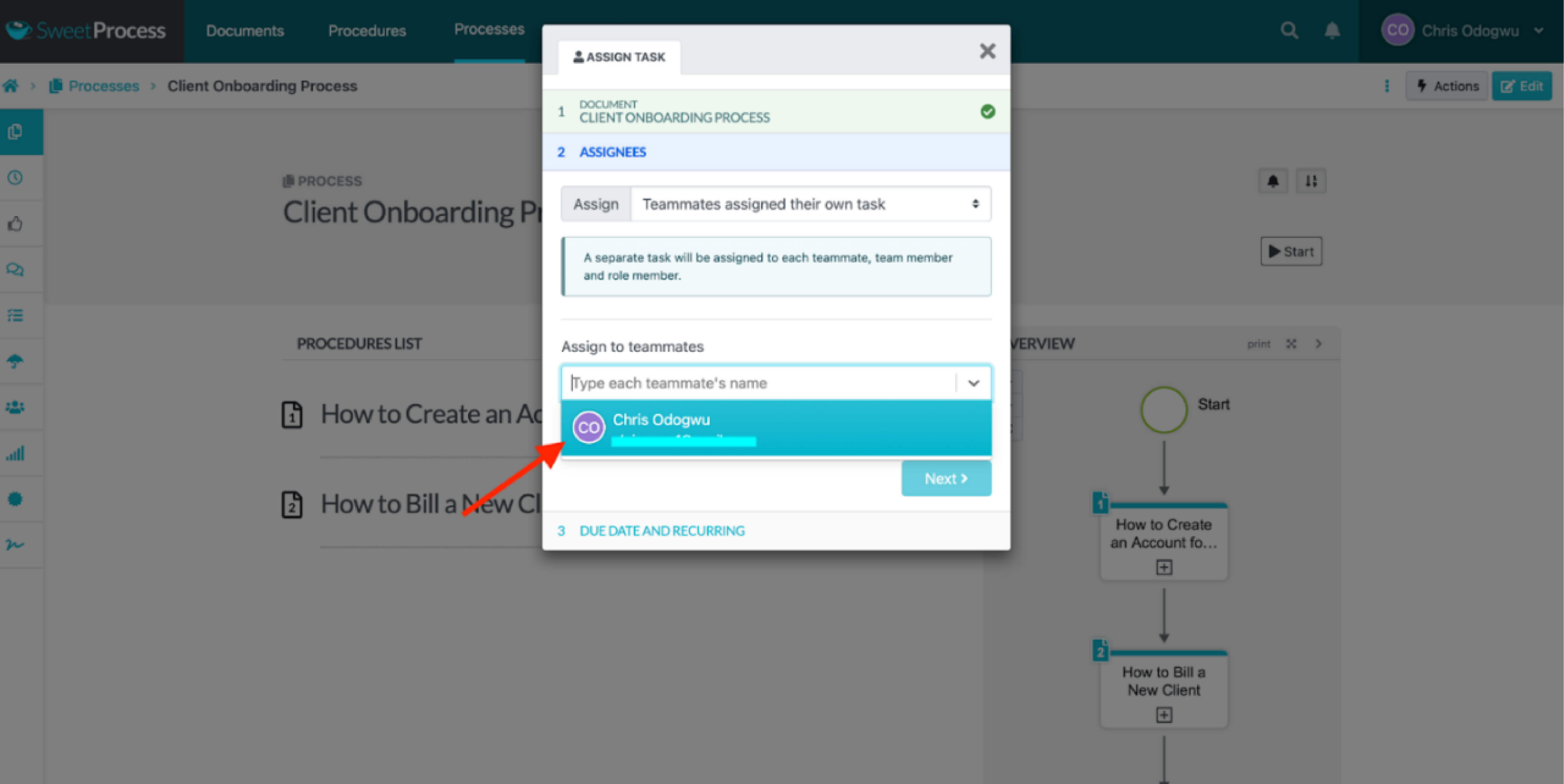
Enter the task name, due date, time, and frequency, and click “Assign Task.”
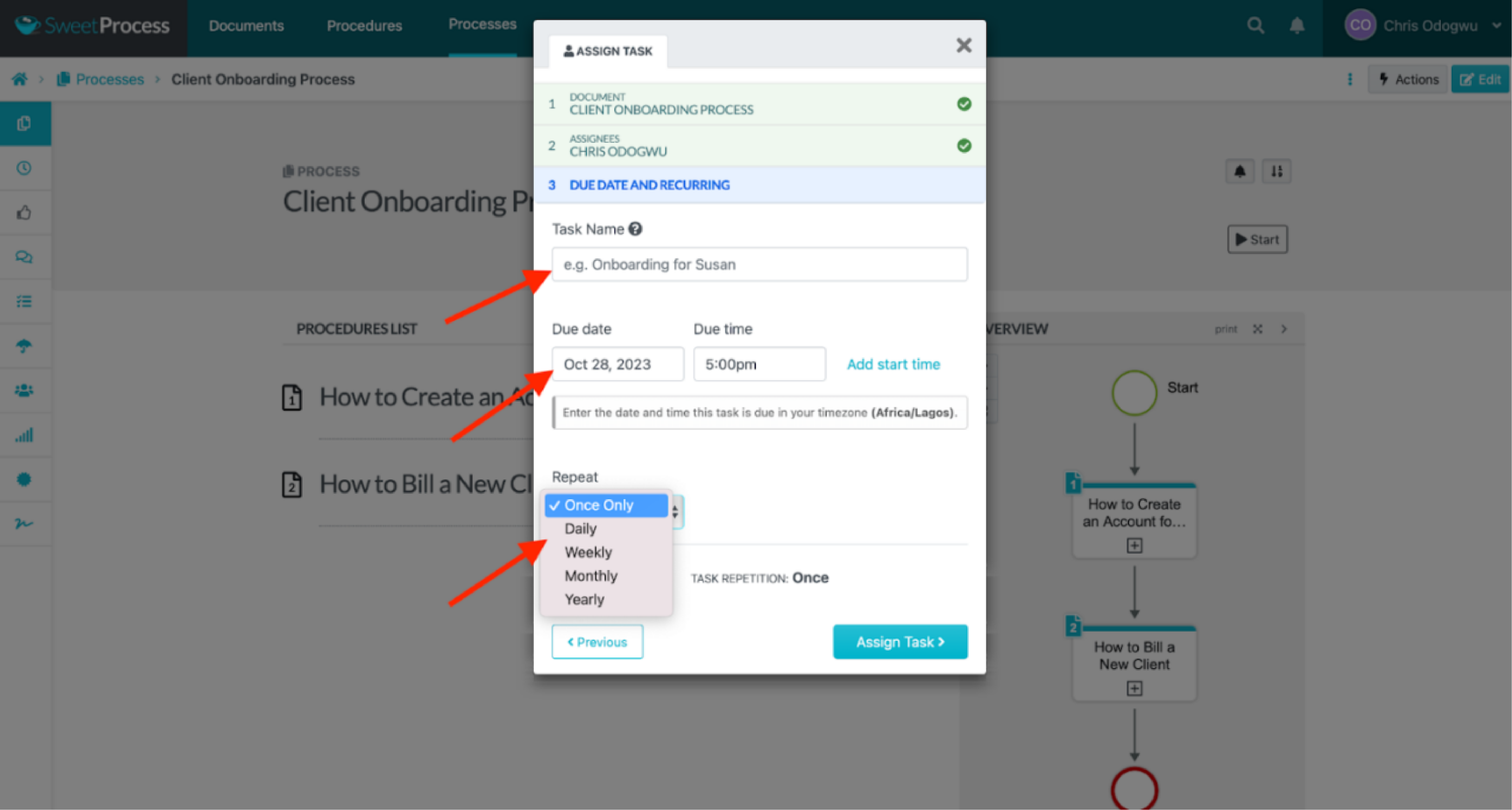
Level Up Your Leadership & Management Skills

In Good to Great: Why Some Companies Make the Leap…and Others Don’t, Jim Collins explains why some organizations achieve great success while others struggle.
One of the reasons is that the former are smart enough to leverage productivity tools, enabling them to work better and faster with minimal human errors. Successful businesses are not necessarily doing anything extraordinary.
Their leaders simply identify the little things that make a big difference, which is adopting the right workflow management tool in this case. A good leader looks after their team members by giving them tools that simplify their jobs and enhance their performance.
SweetProcess can help you achieve that. You can document and share documents with team members and collaborate on project management remotely.
It boosts employee confidence and satisfaction as they can access information to deliver great results. This positive state of mind propels them to give their best because they are convinced you have their interest at heart. Sign up for a 14-day free trial. No credit card is needed.
